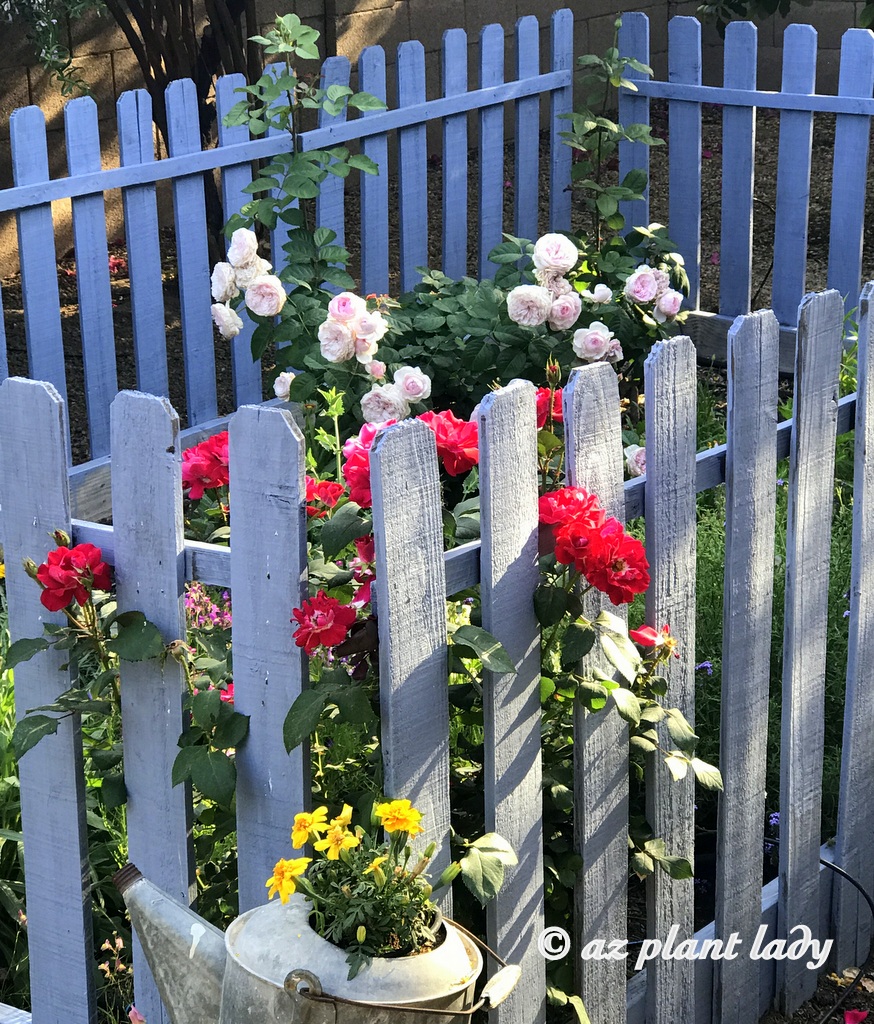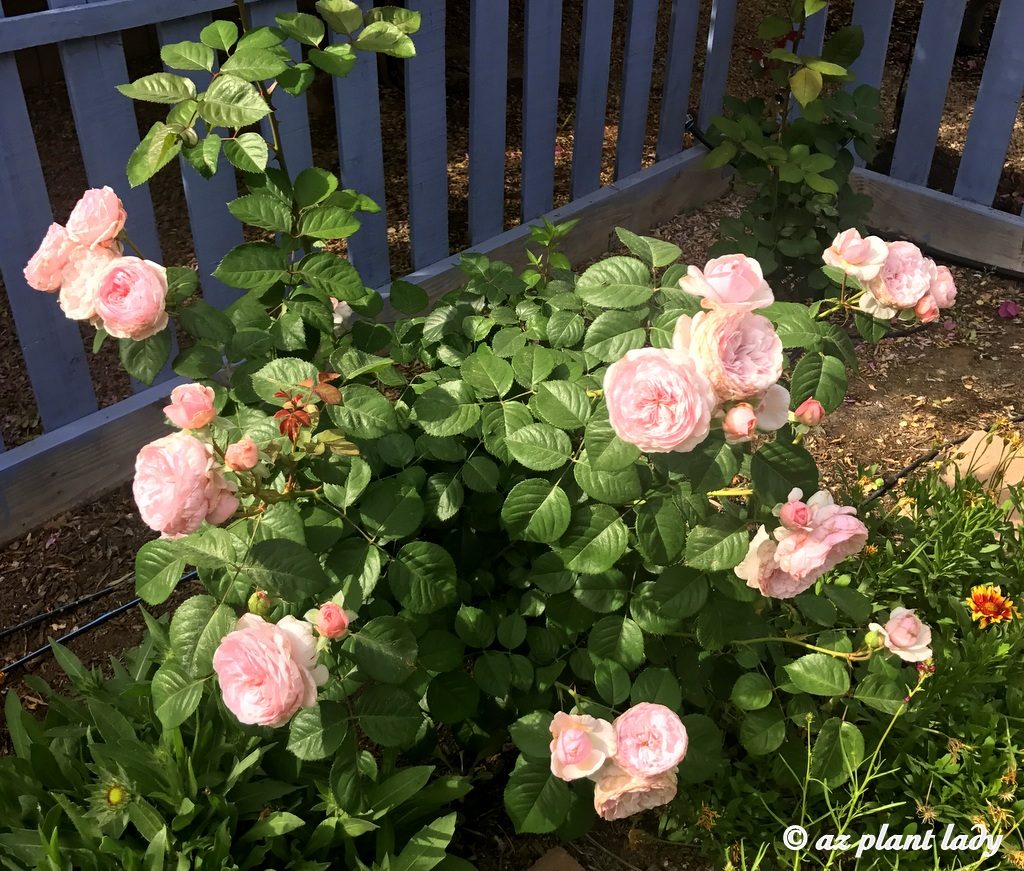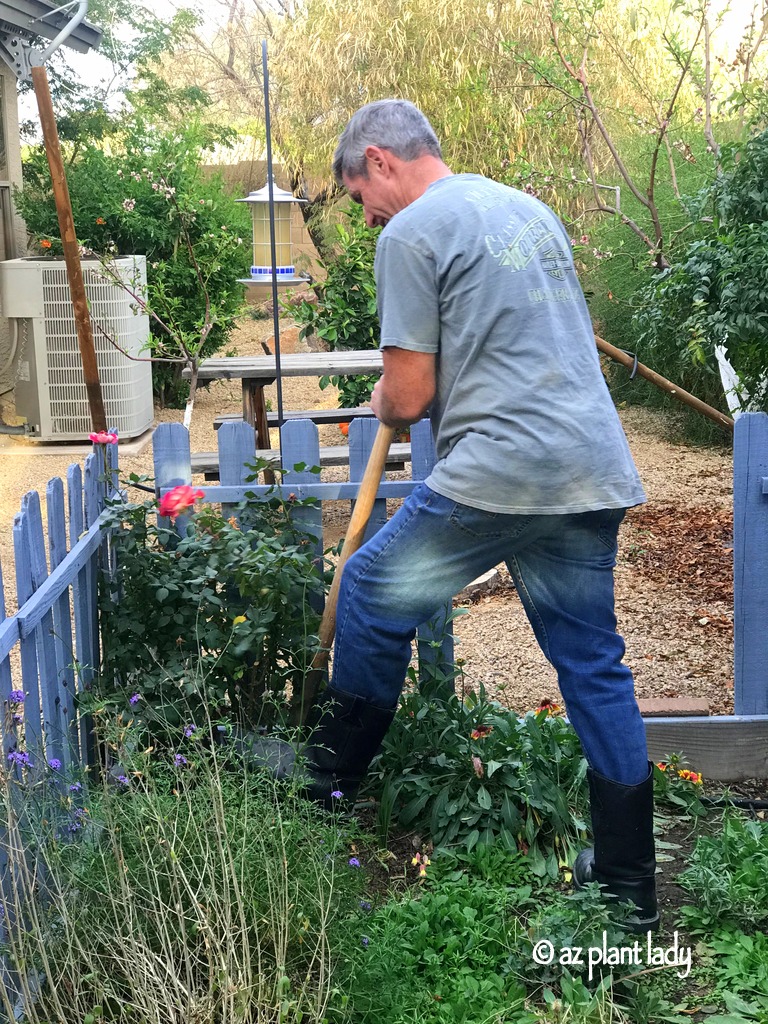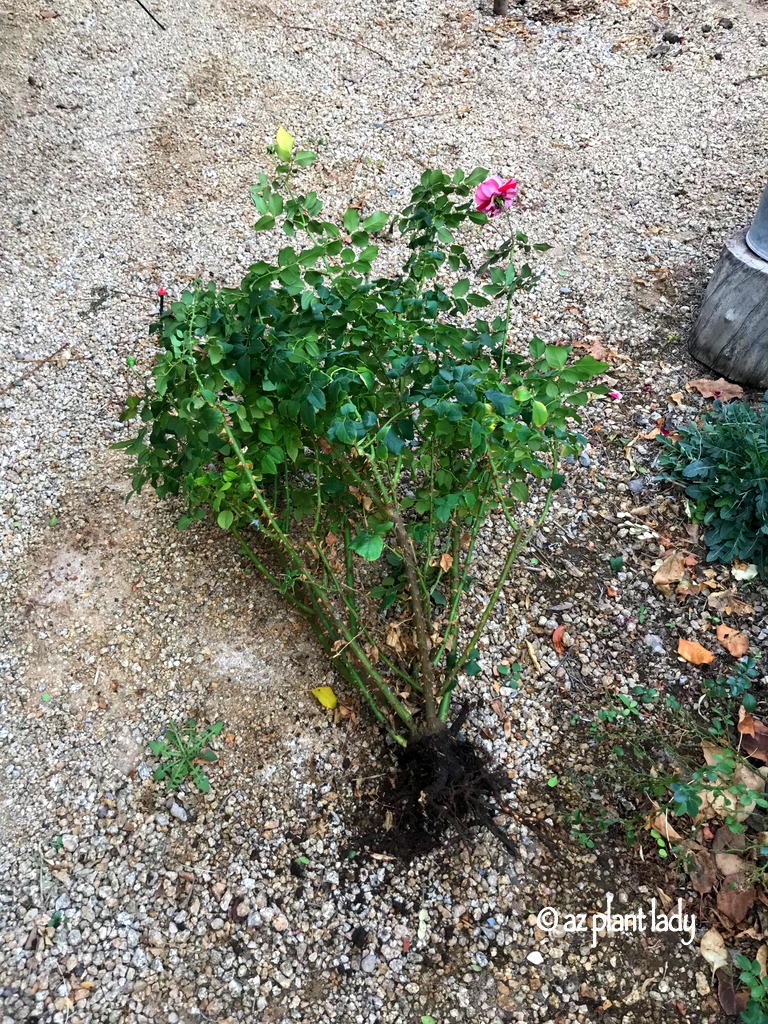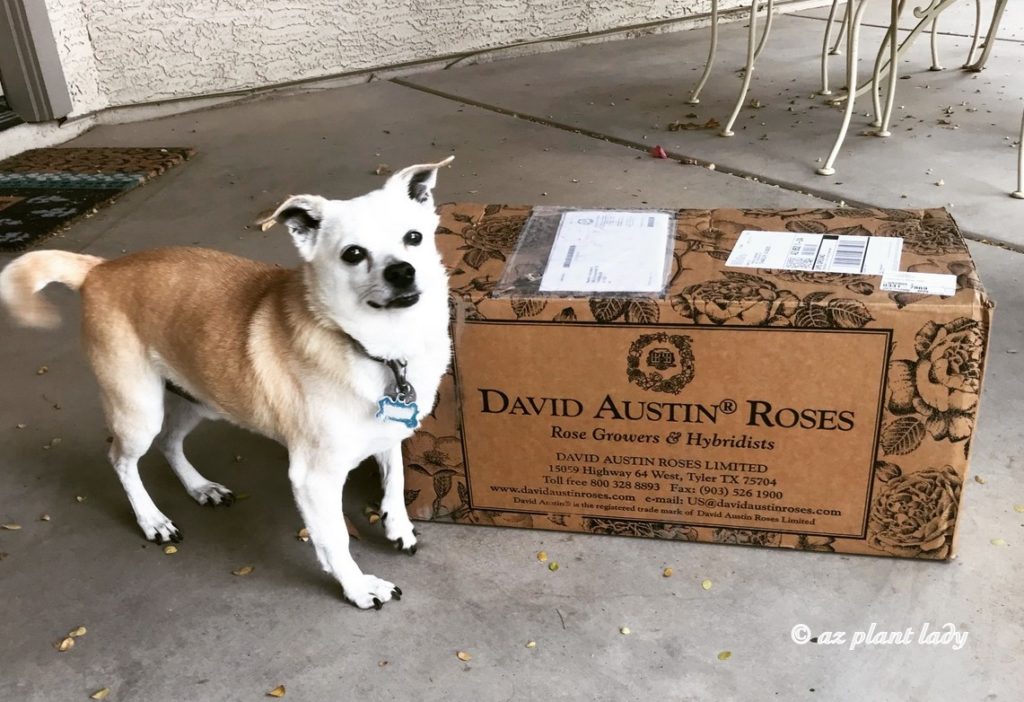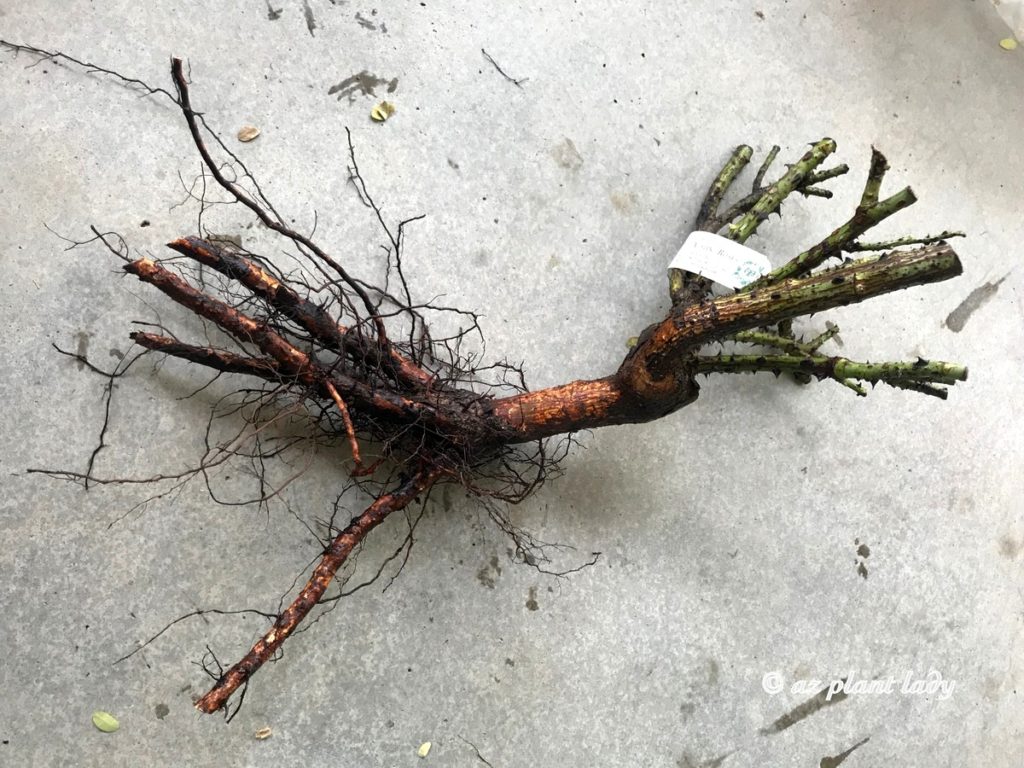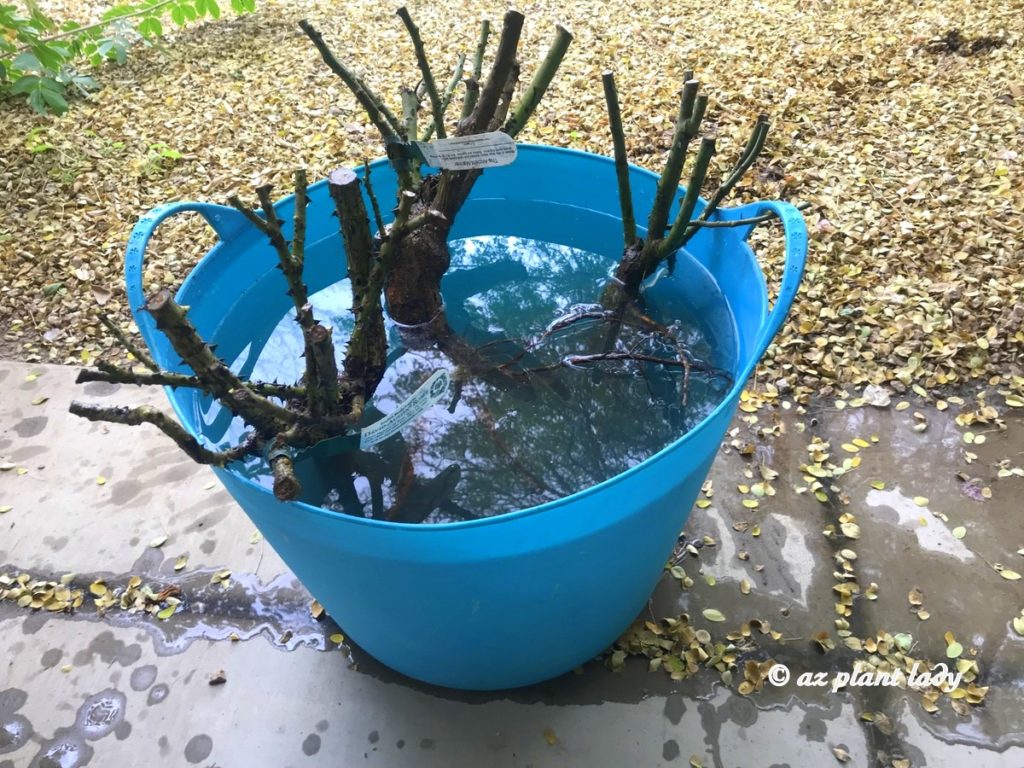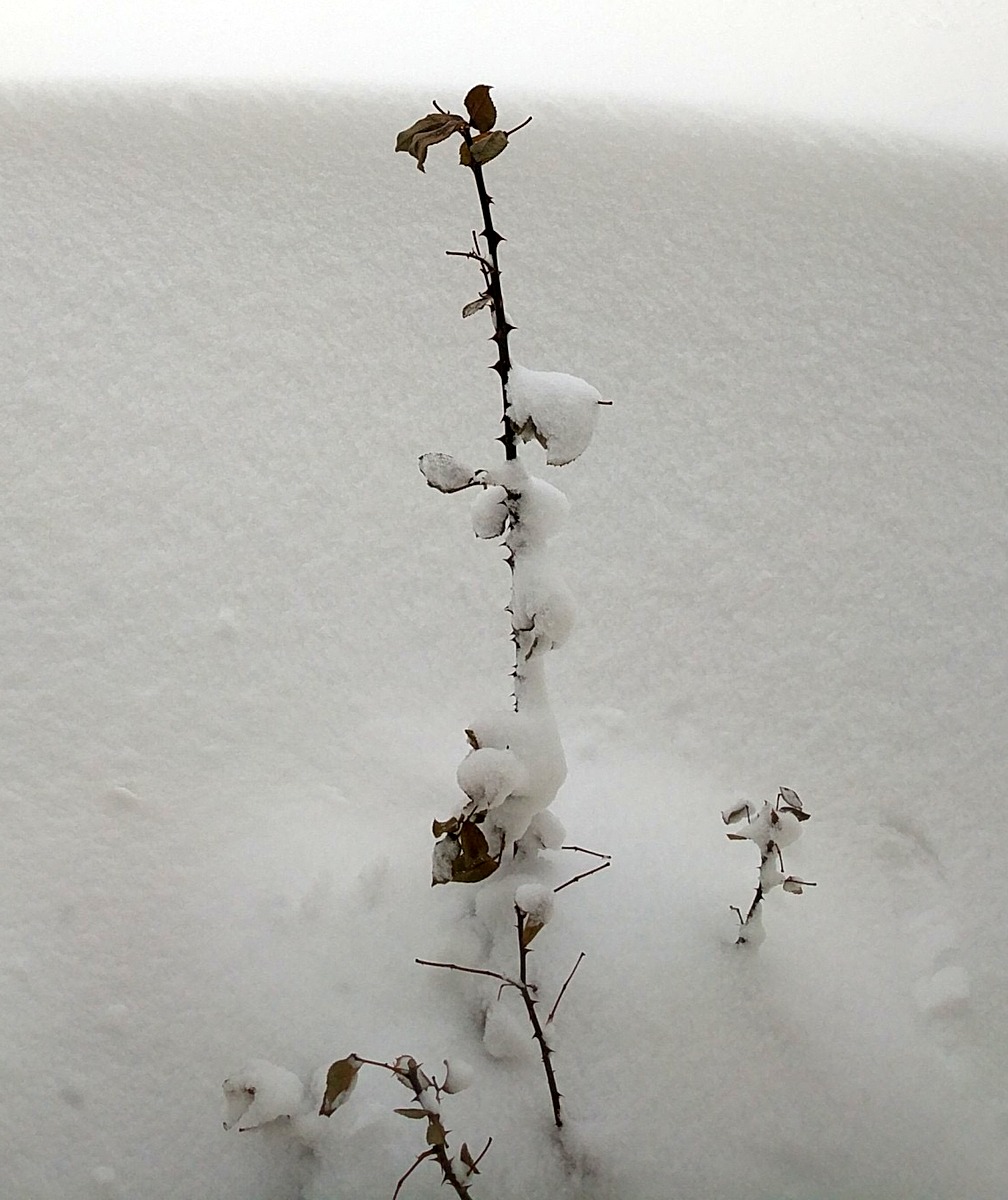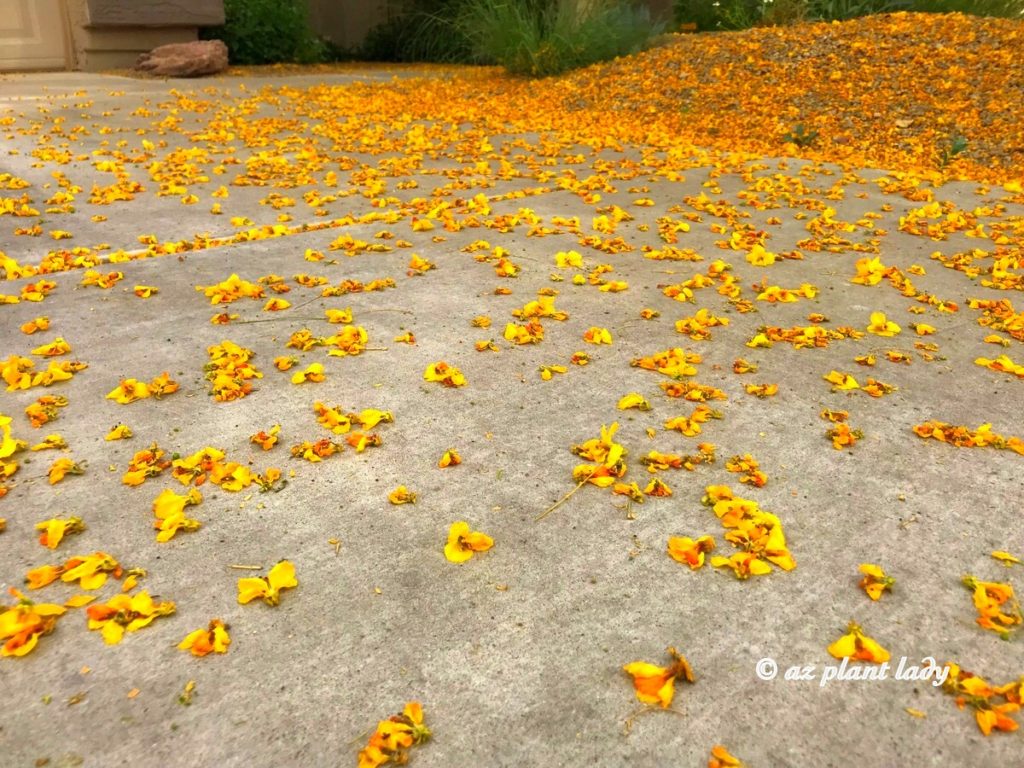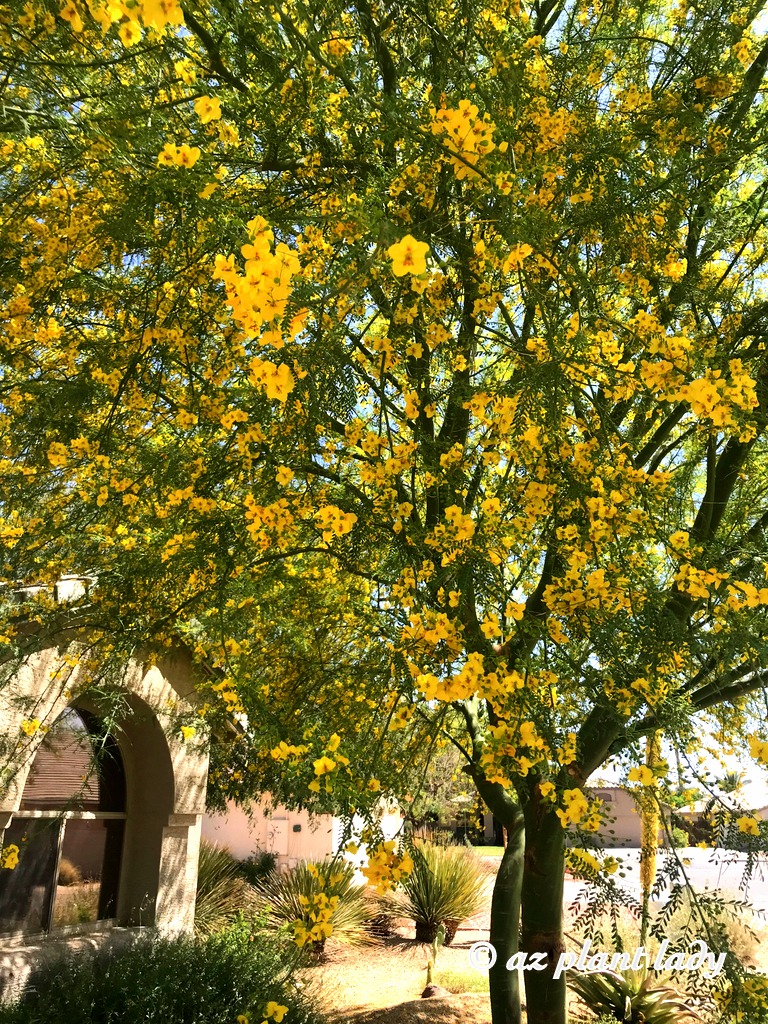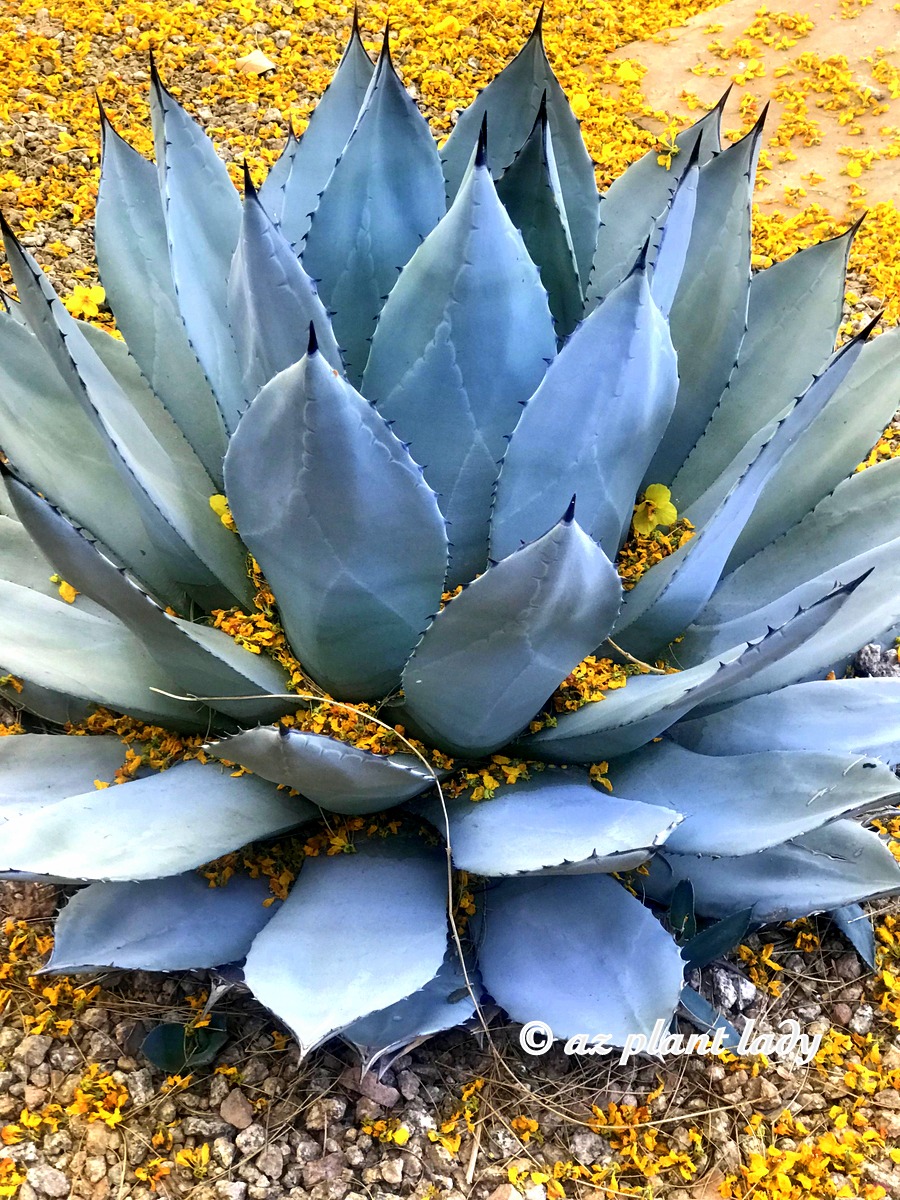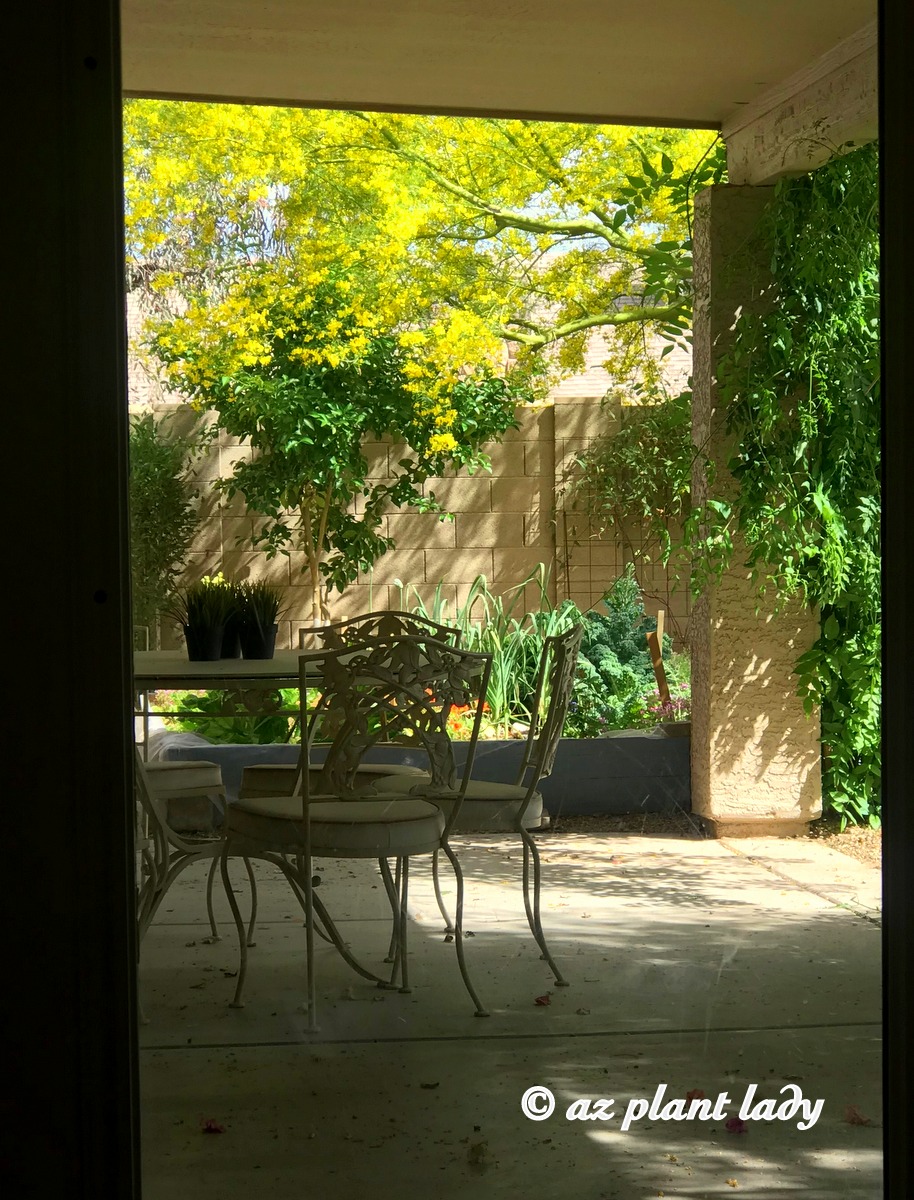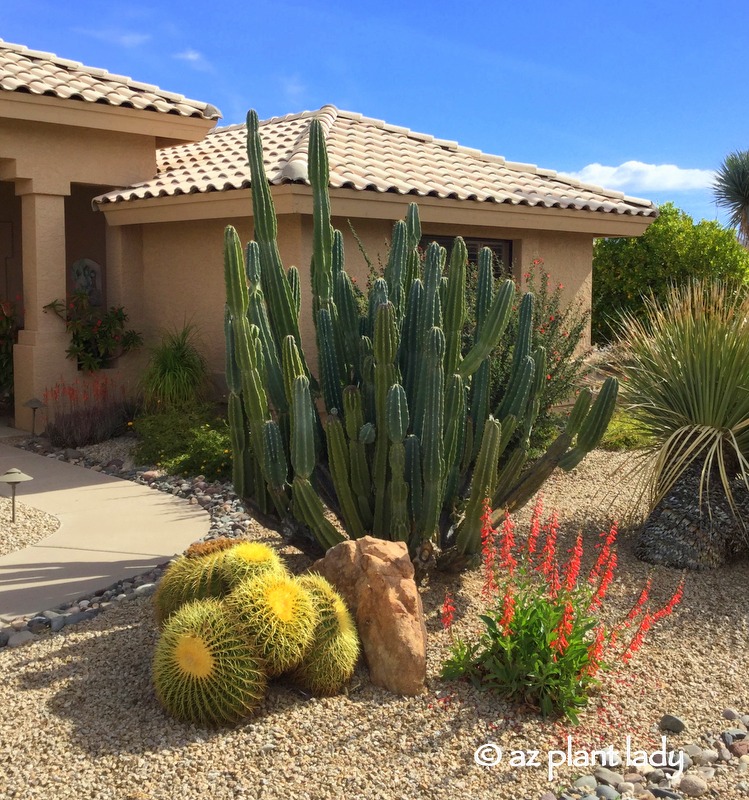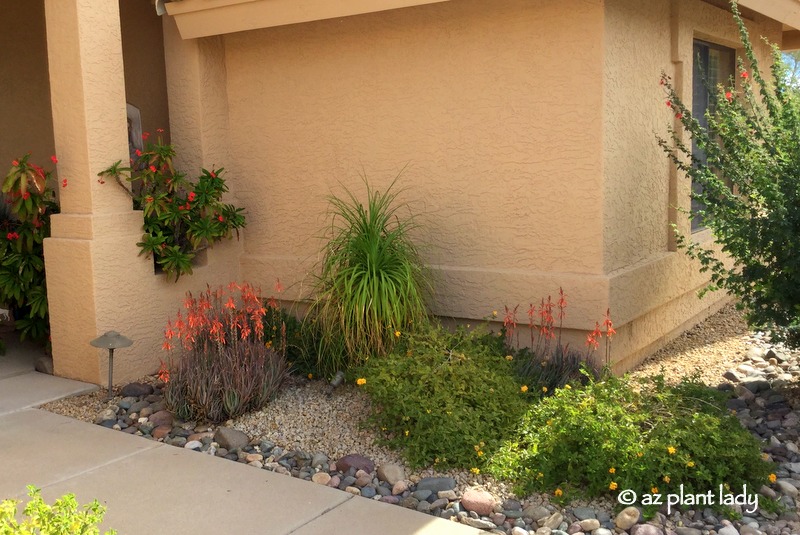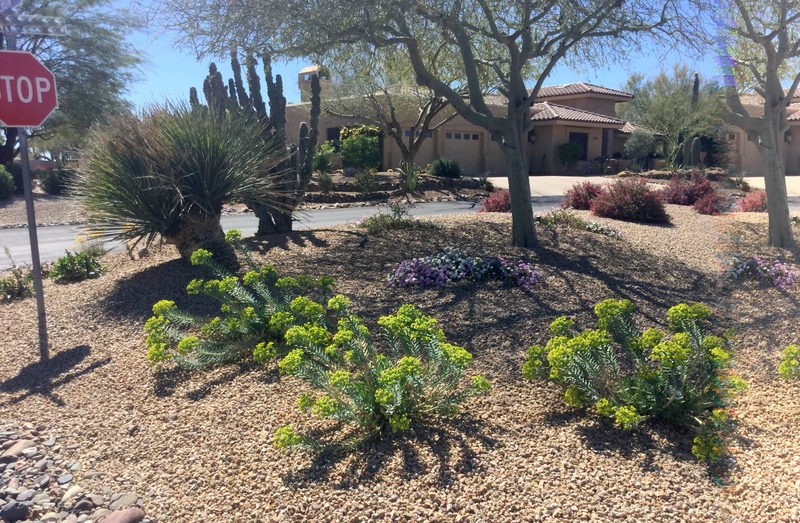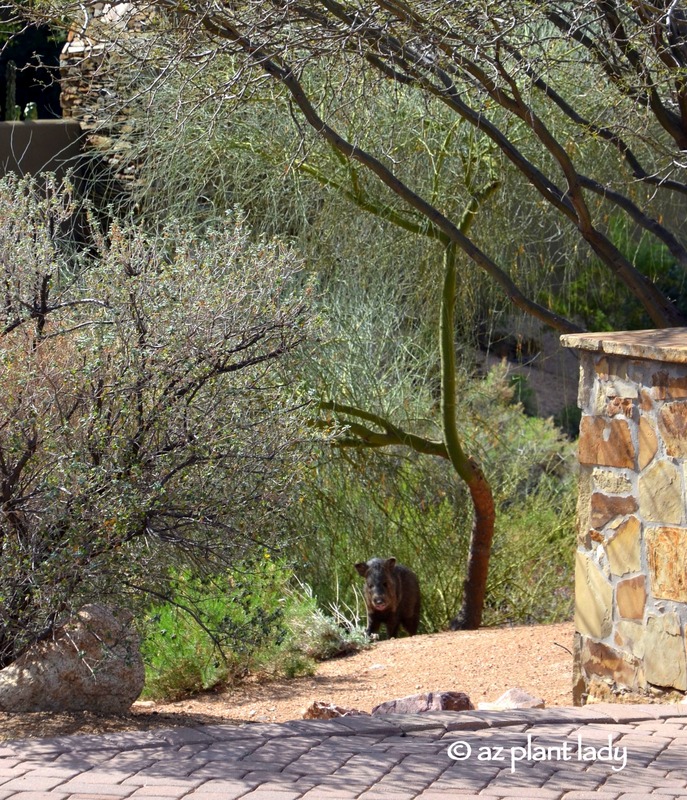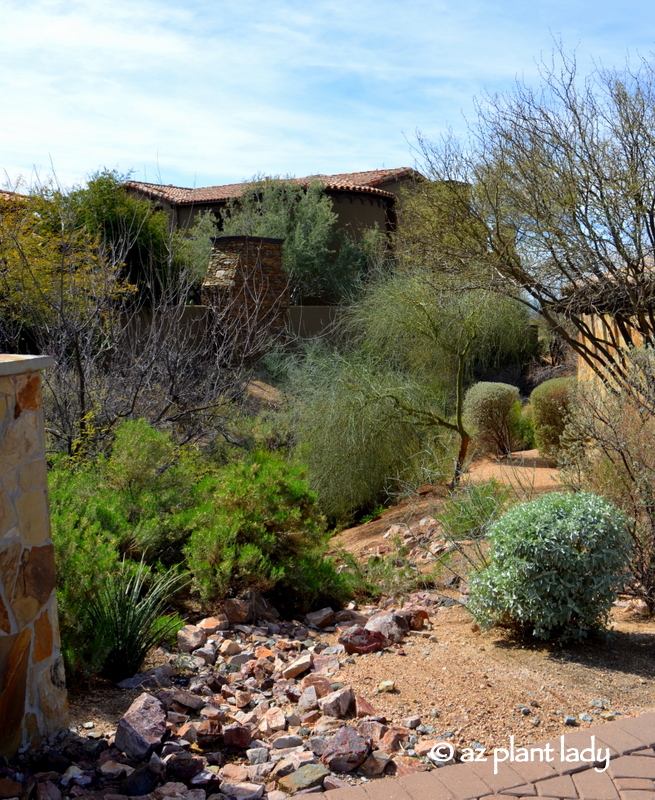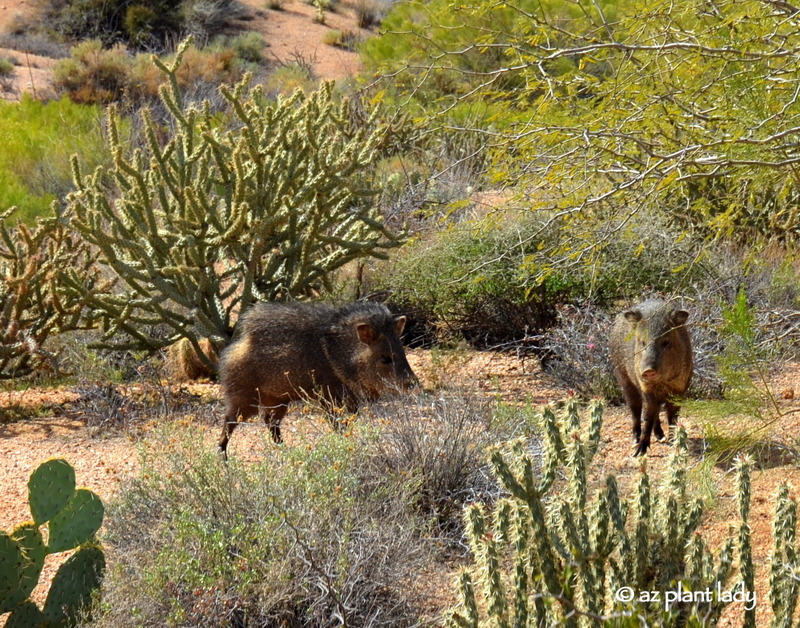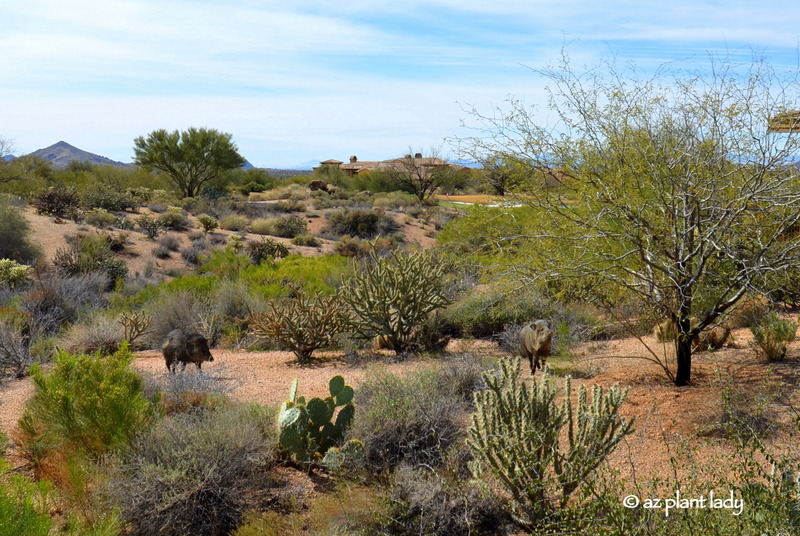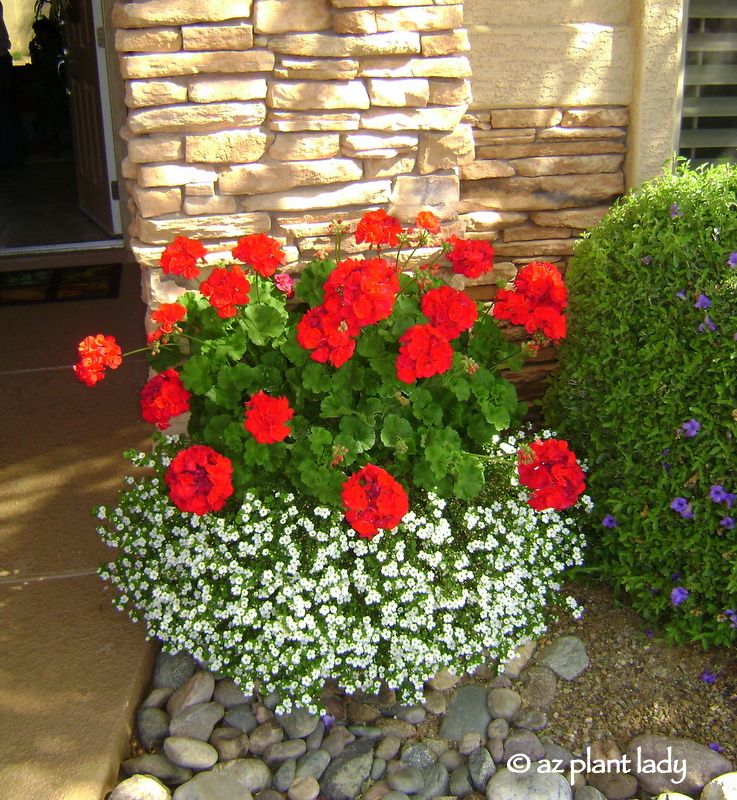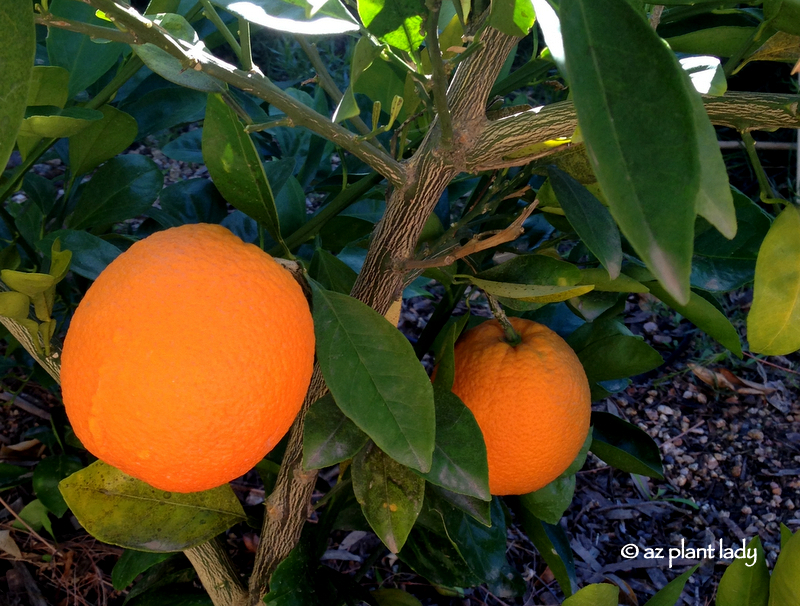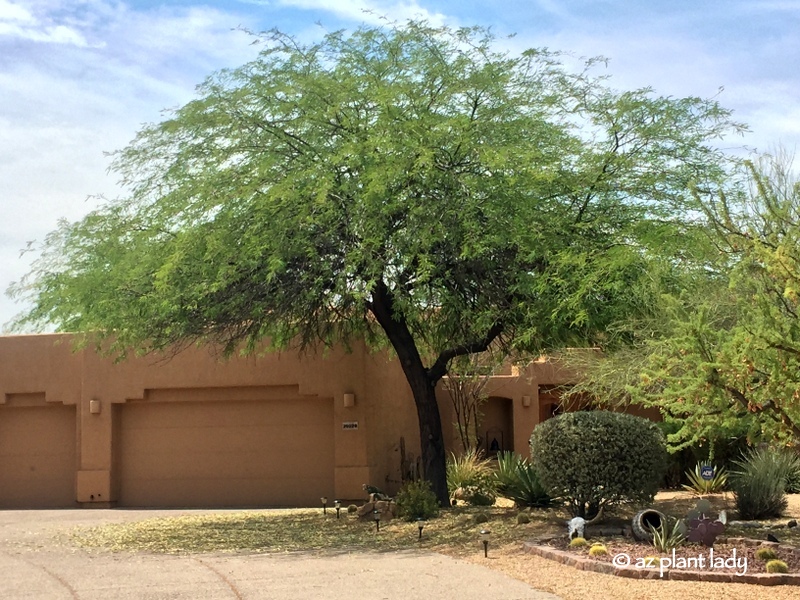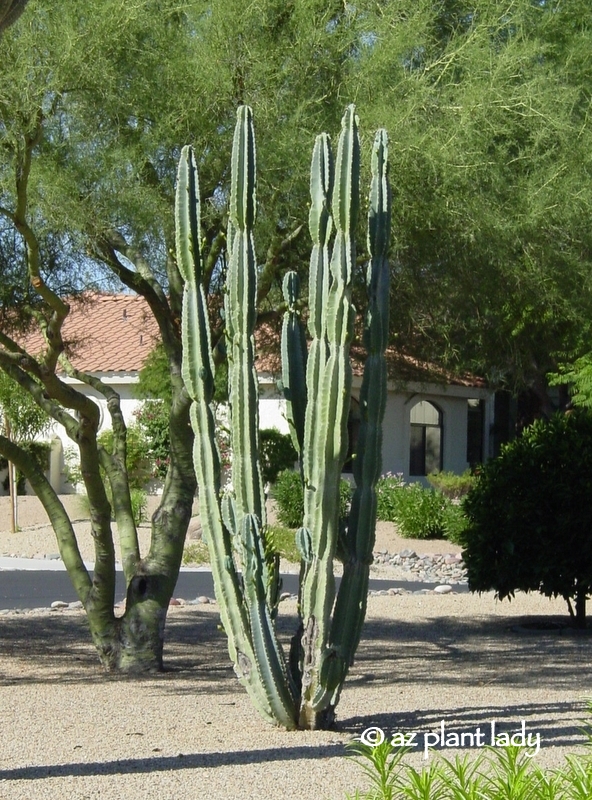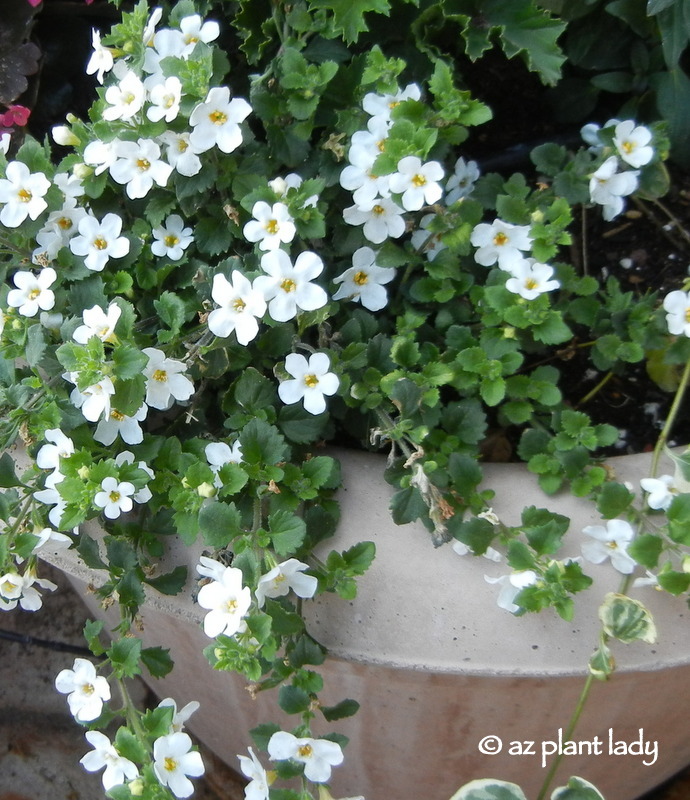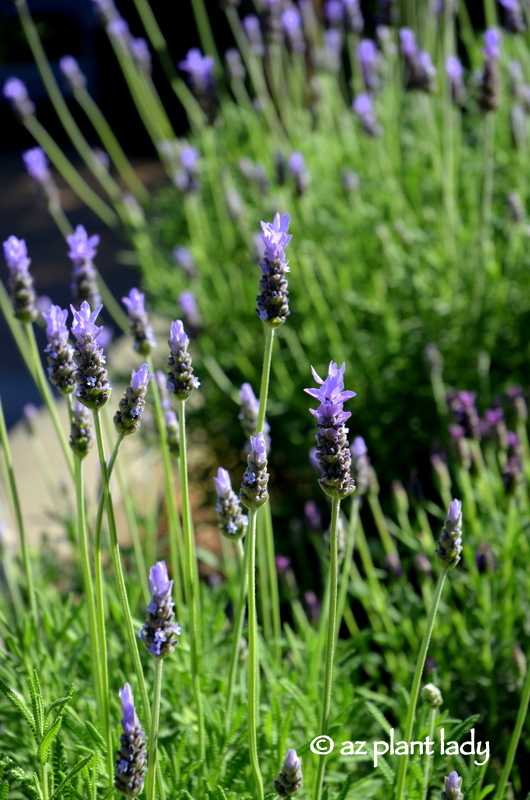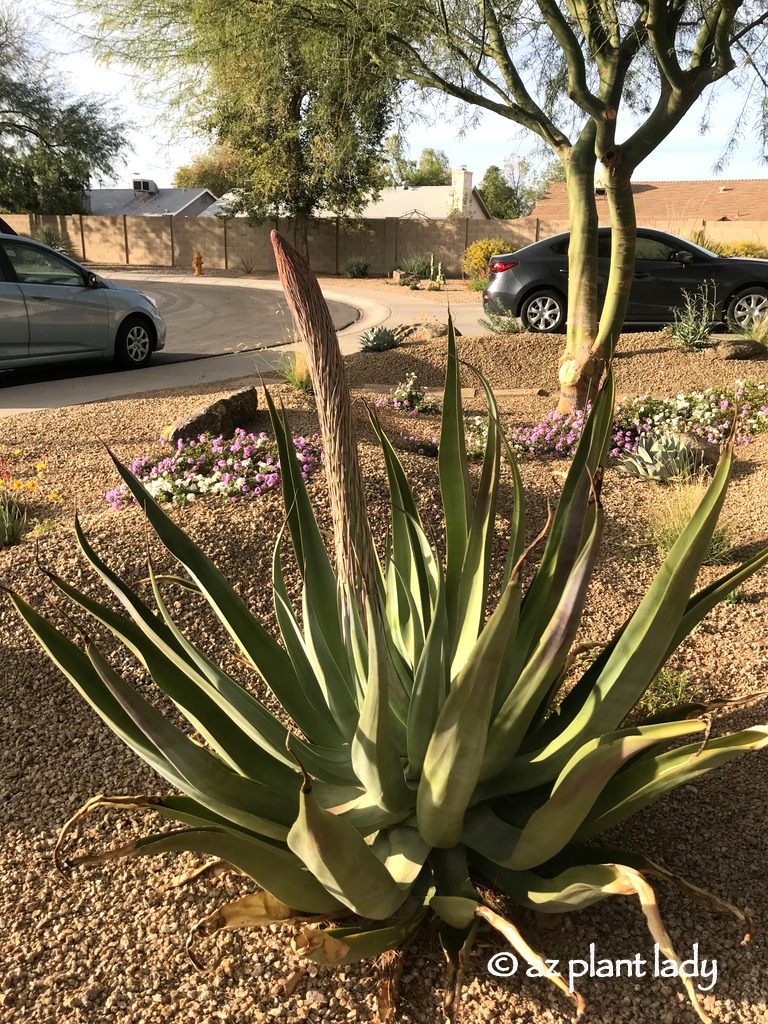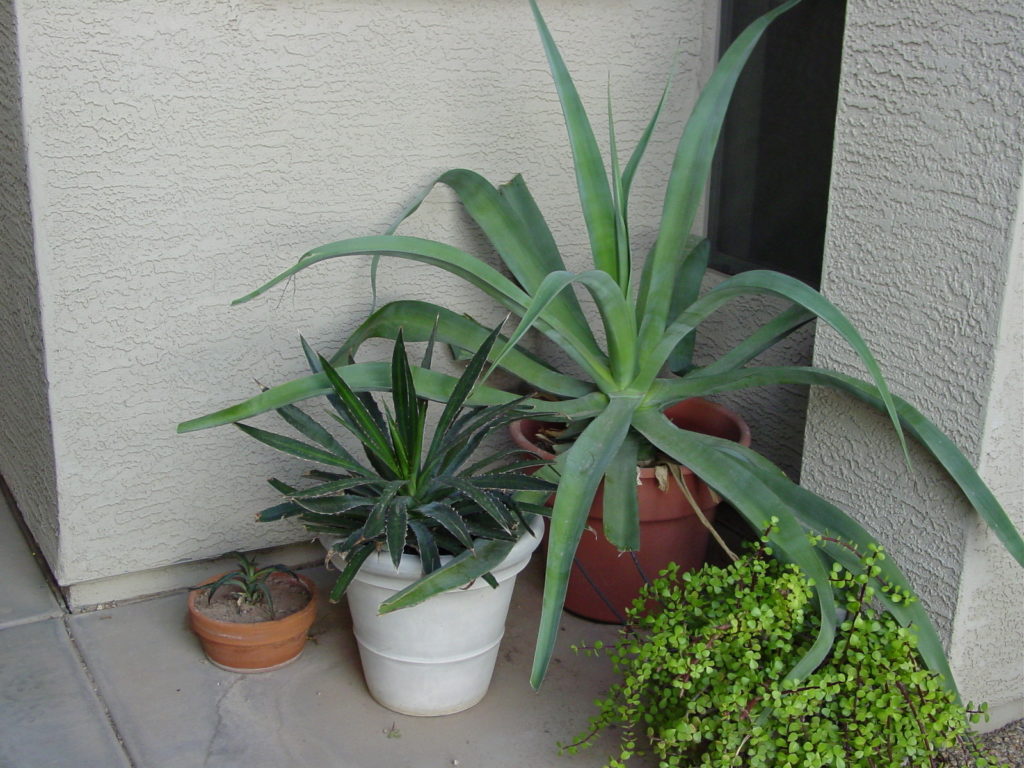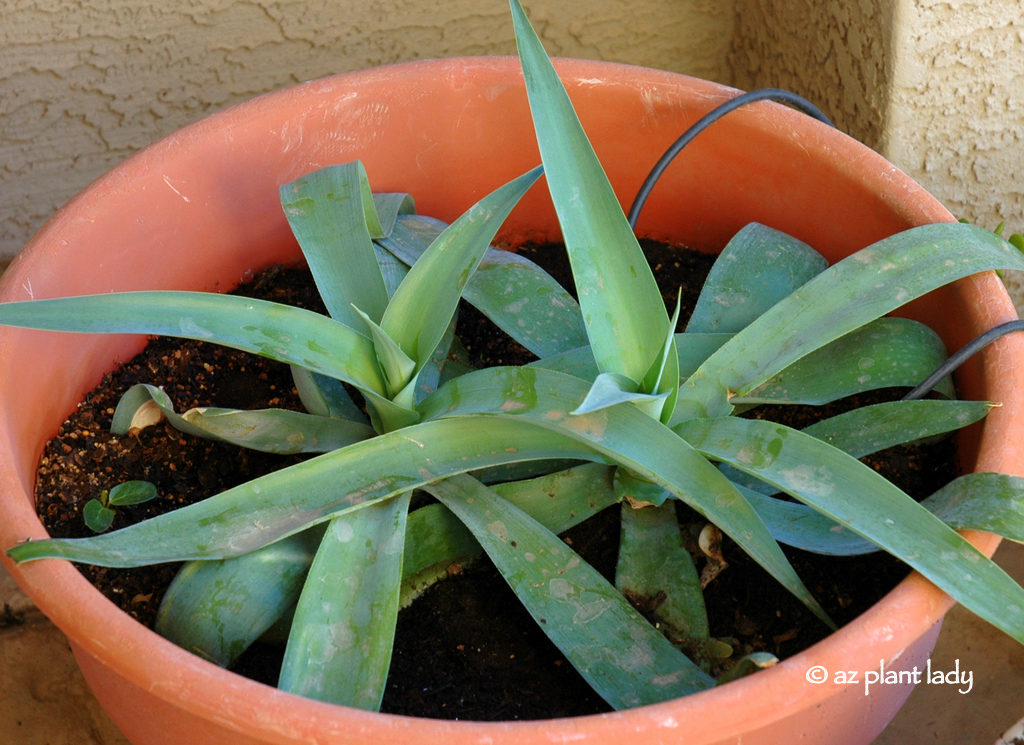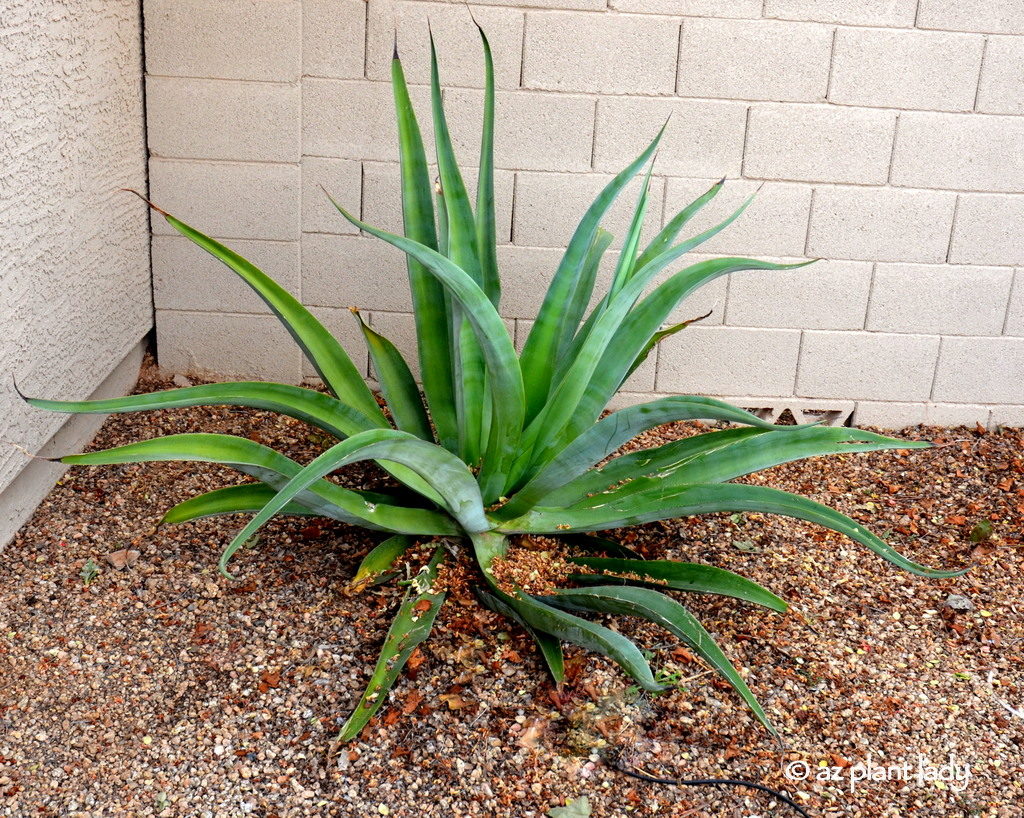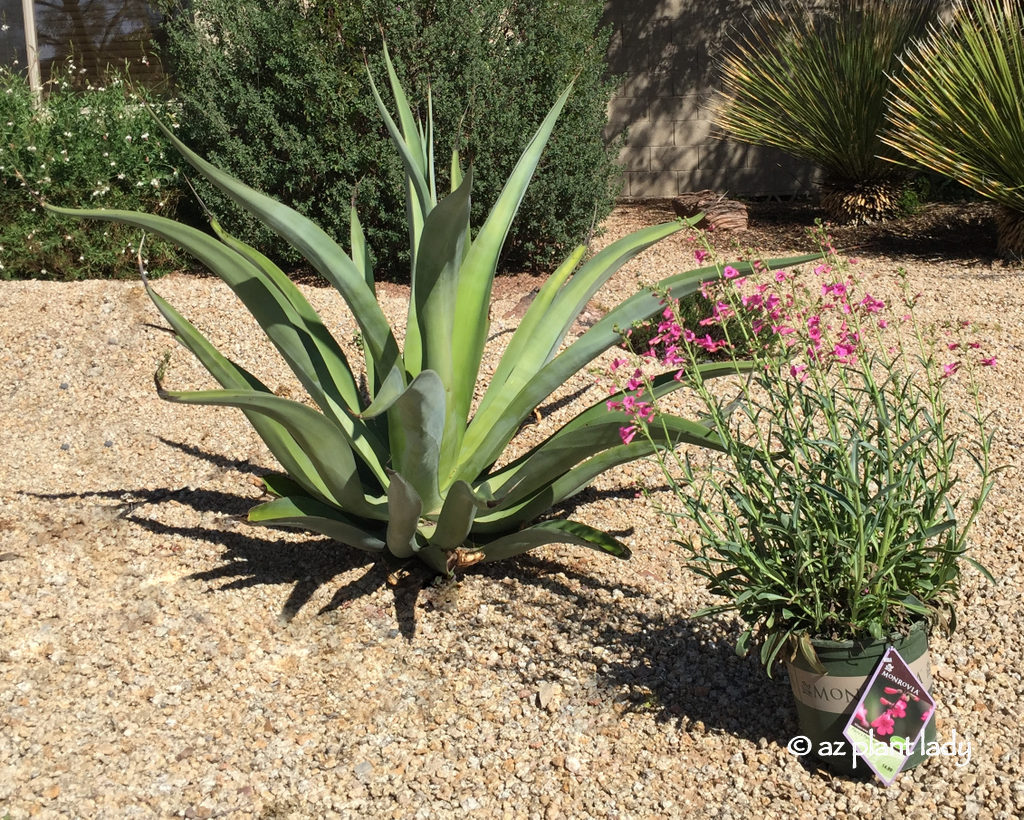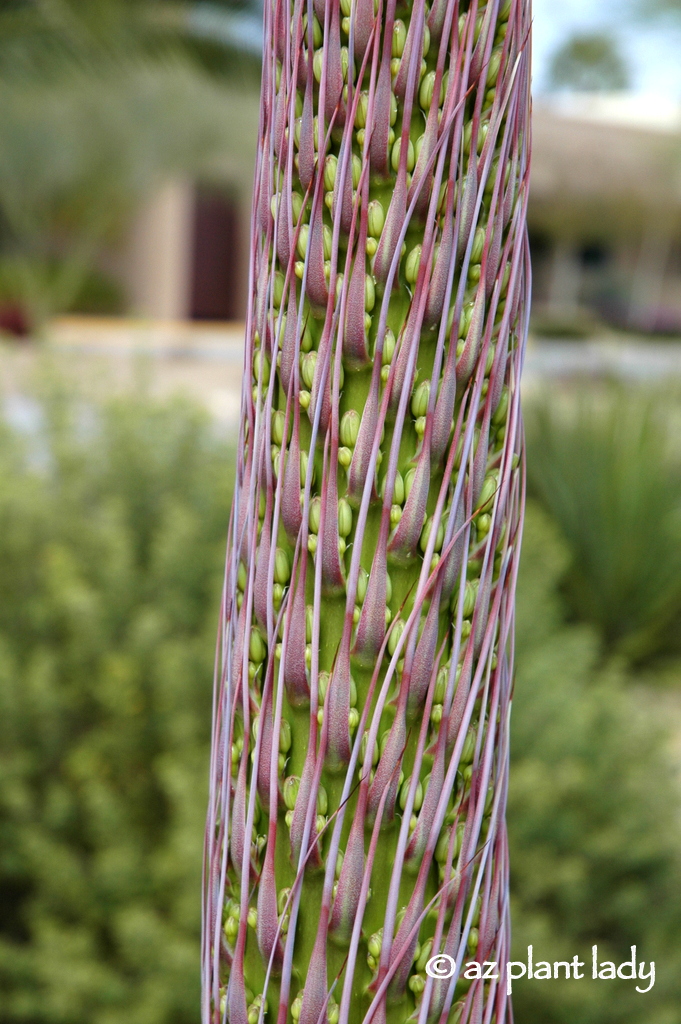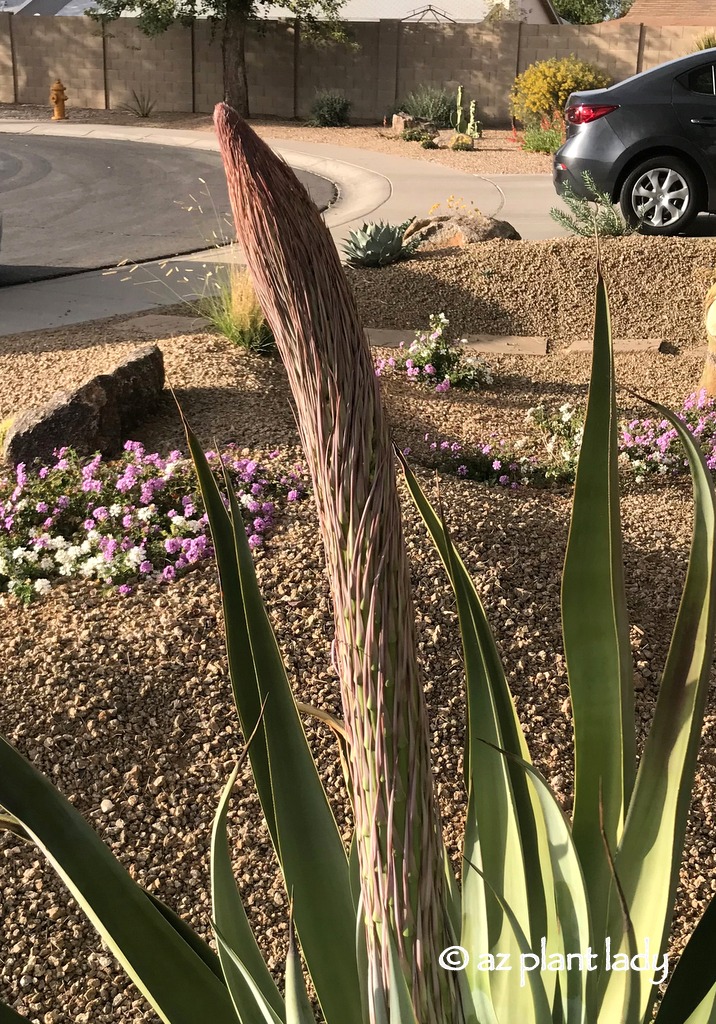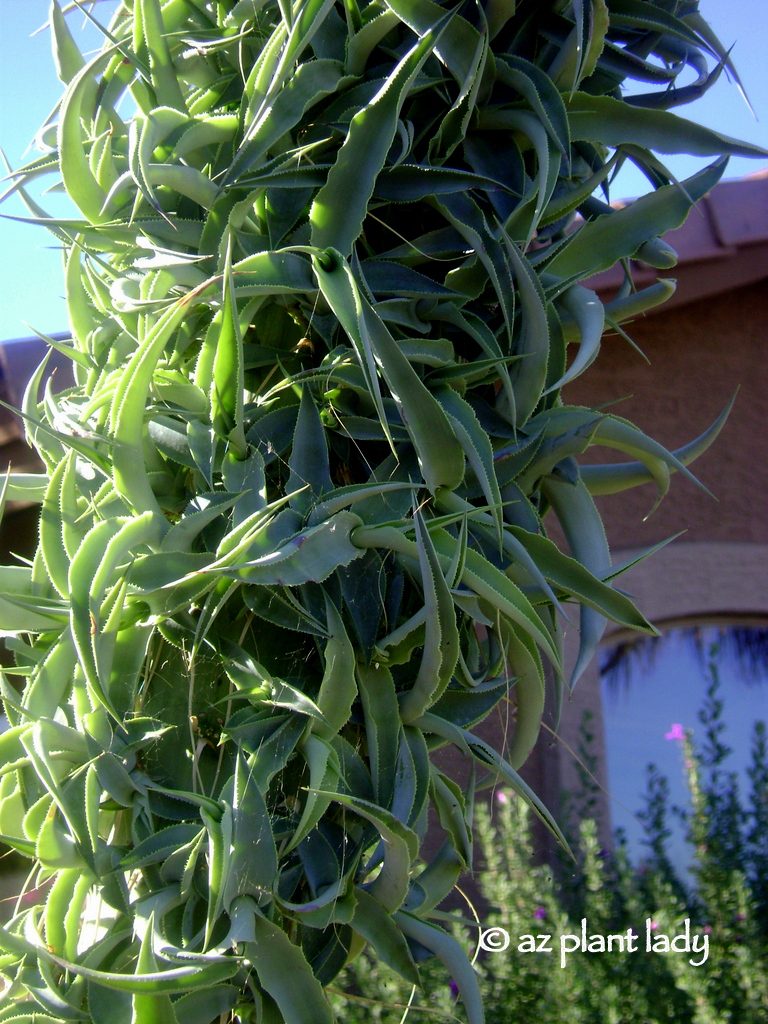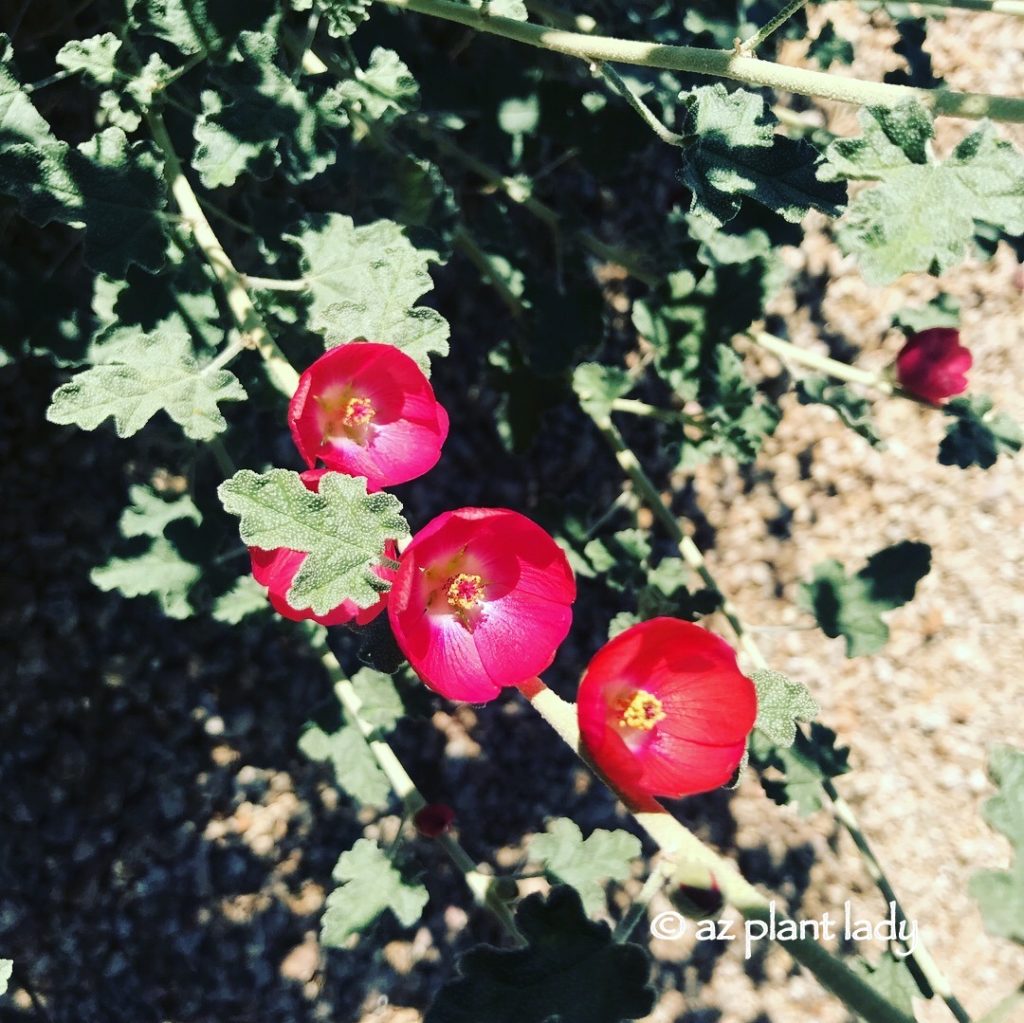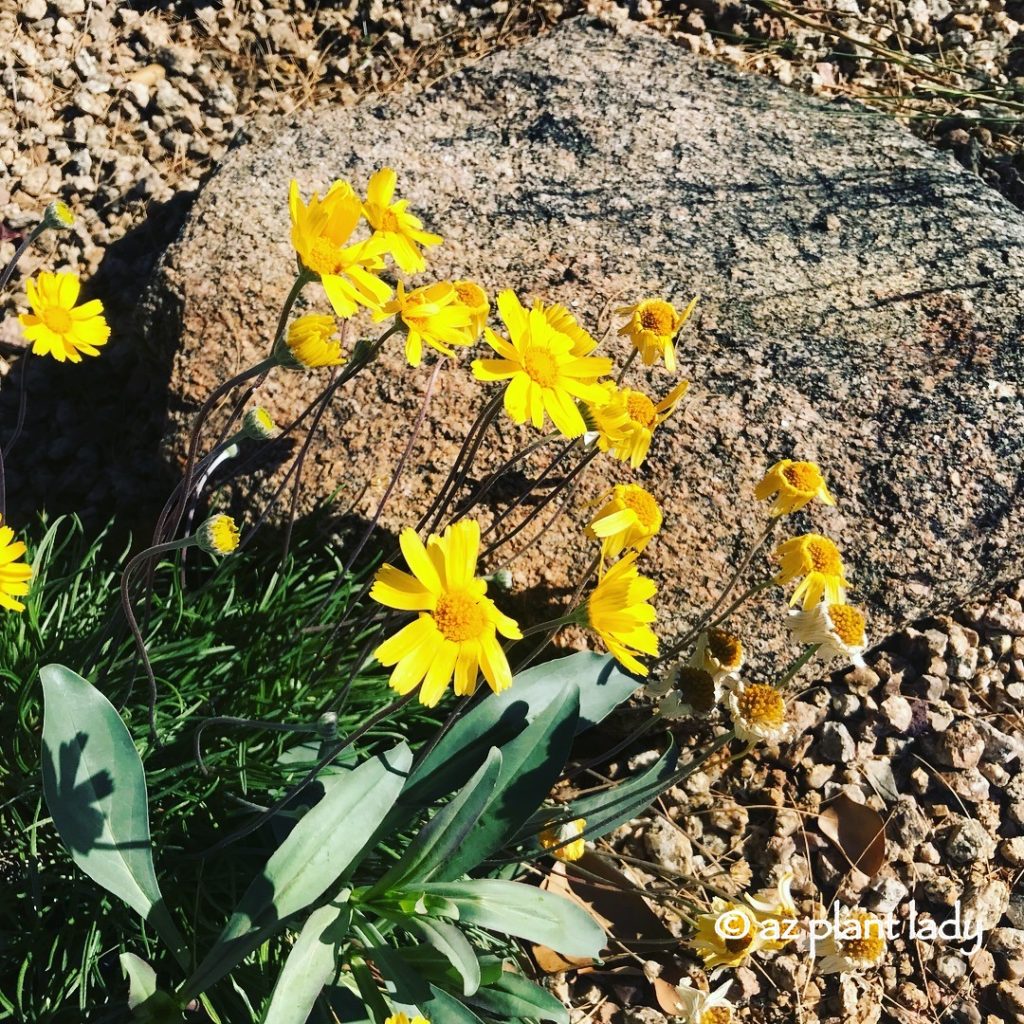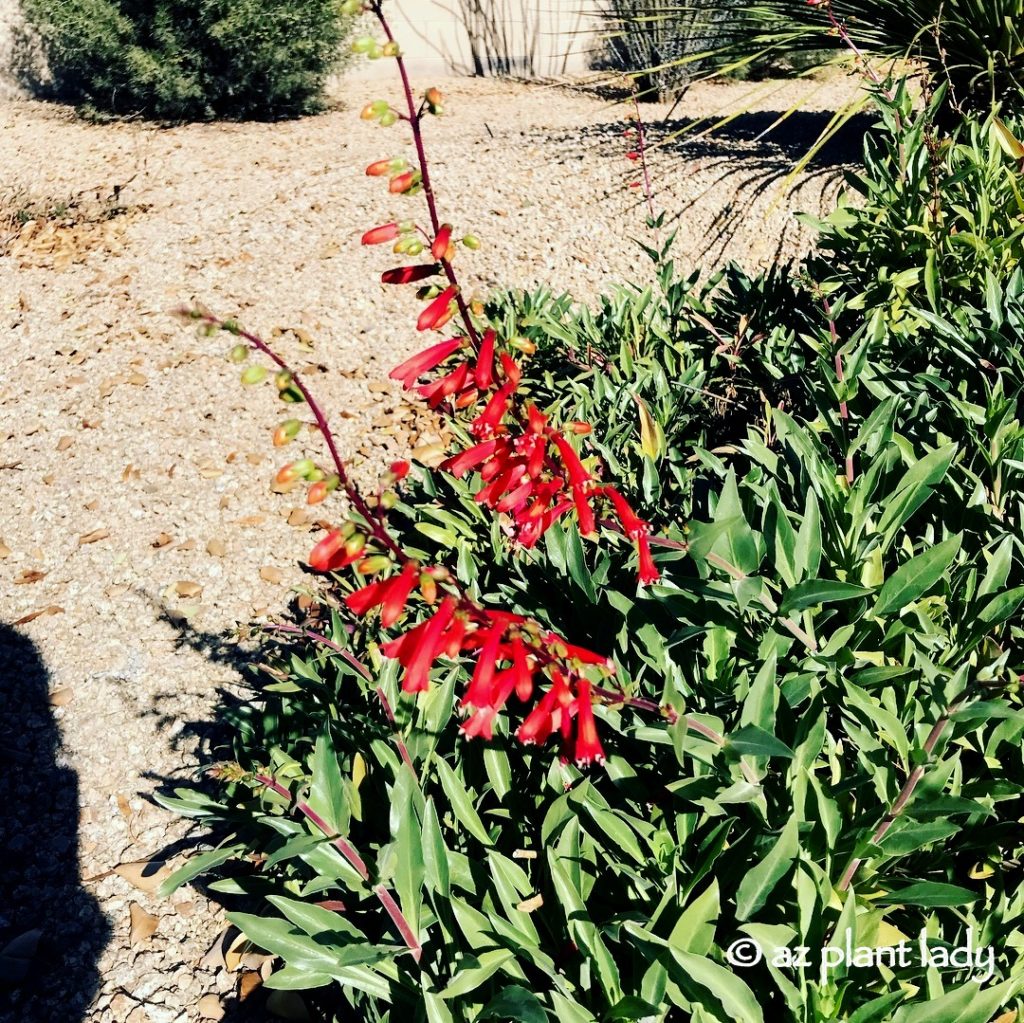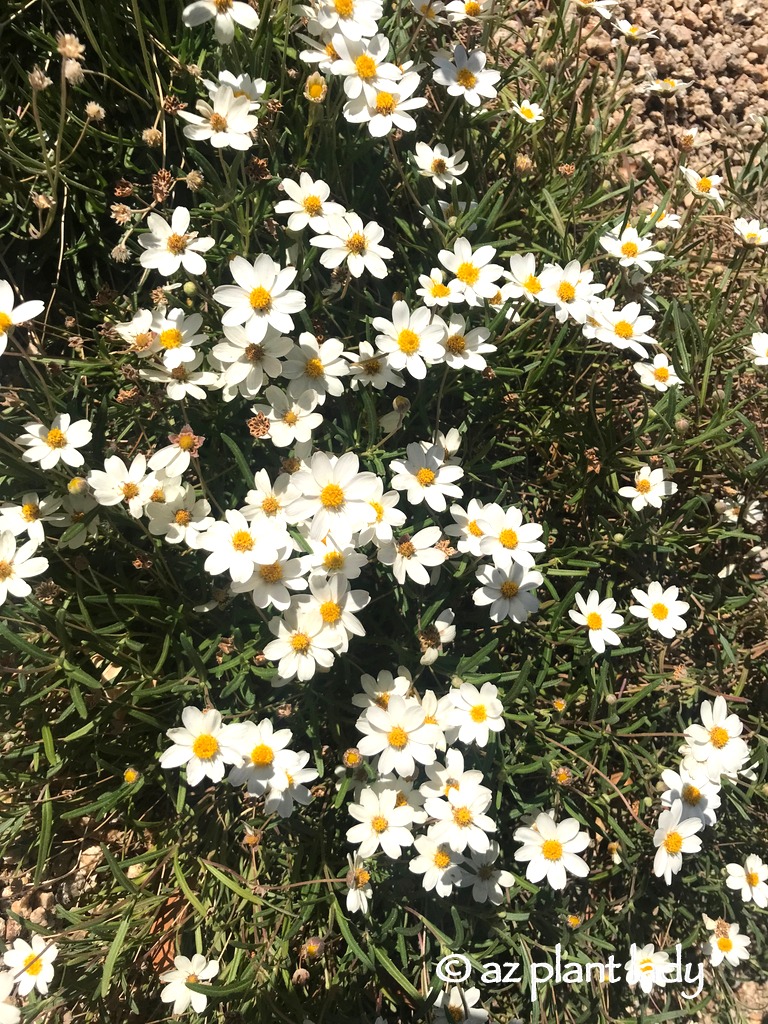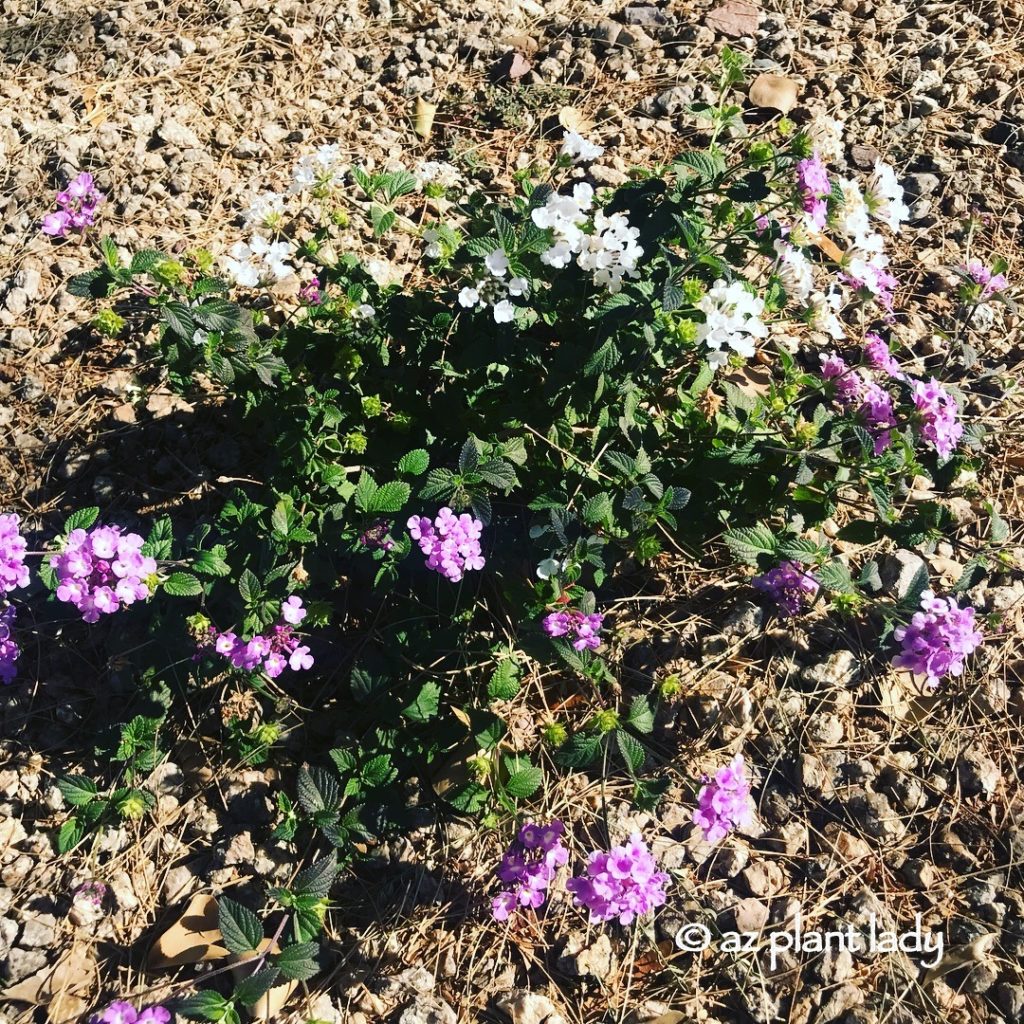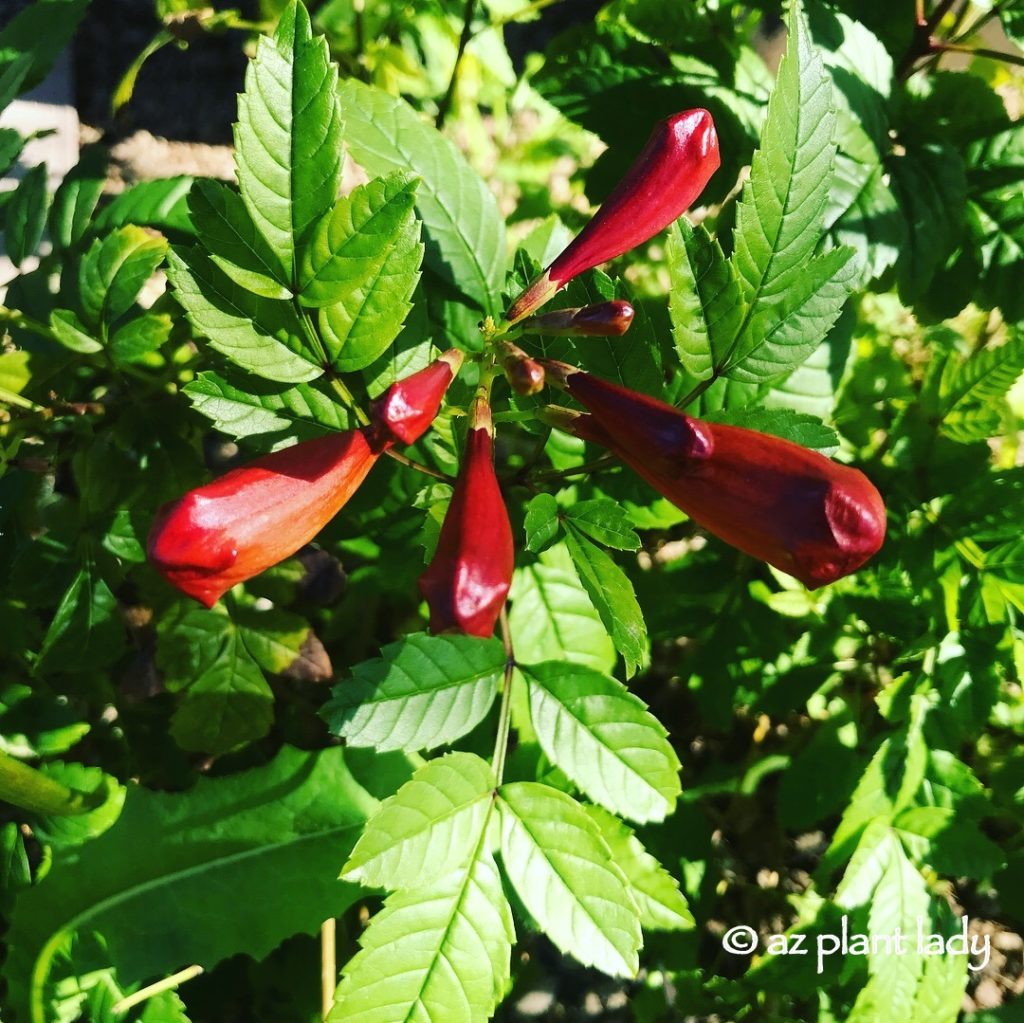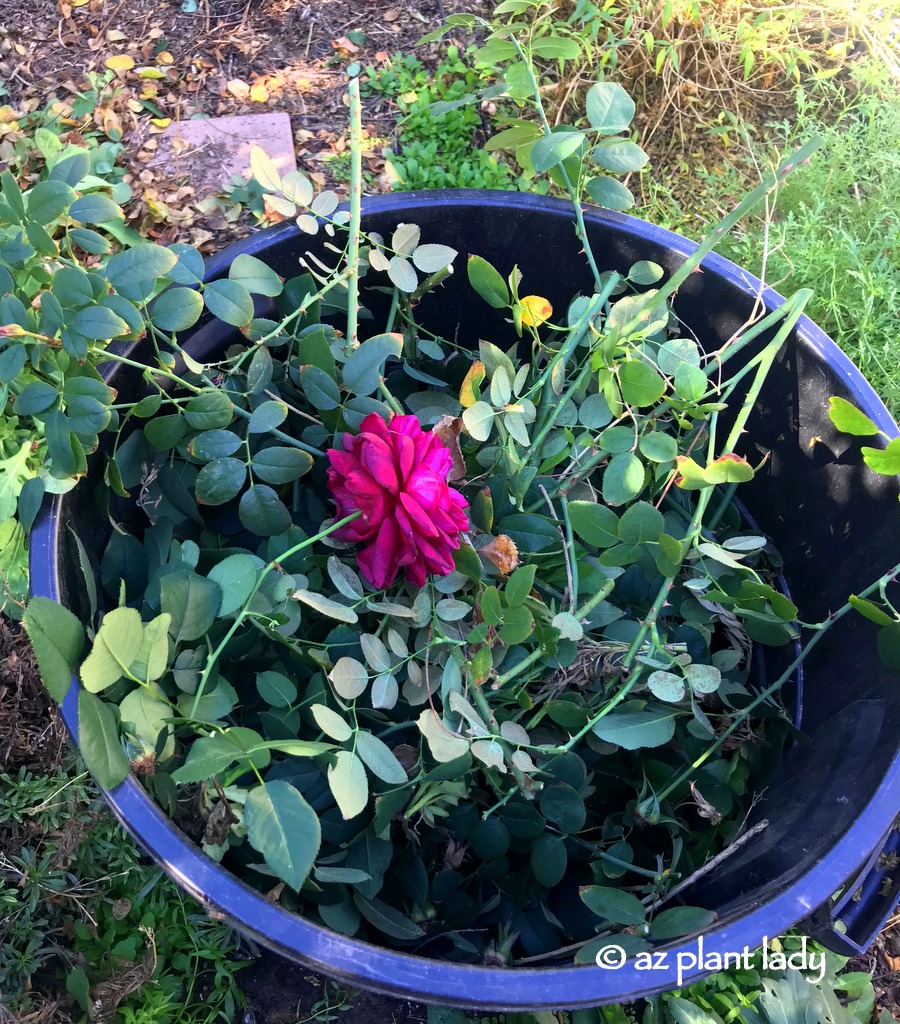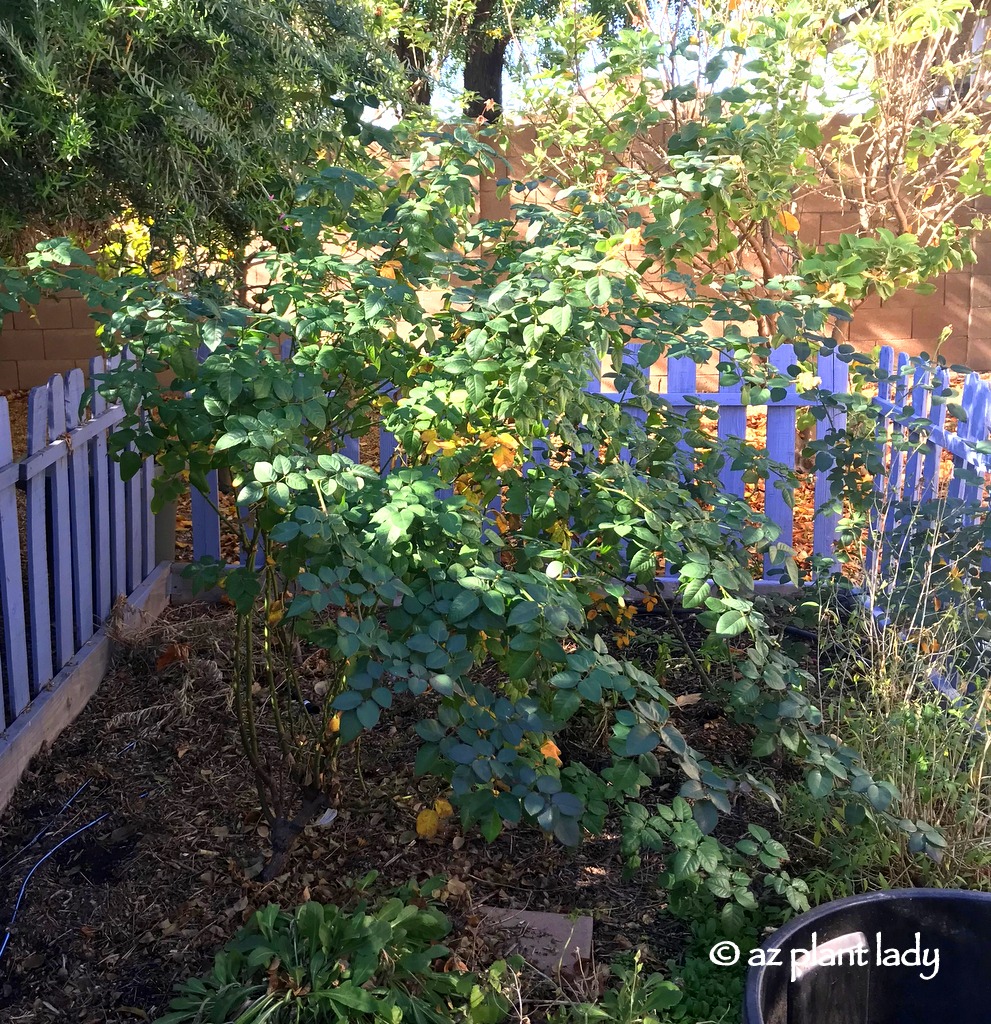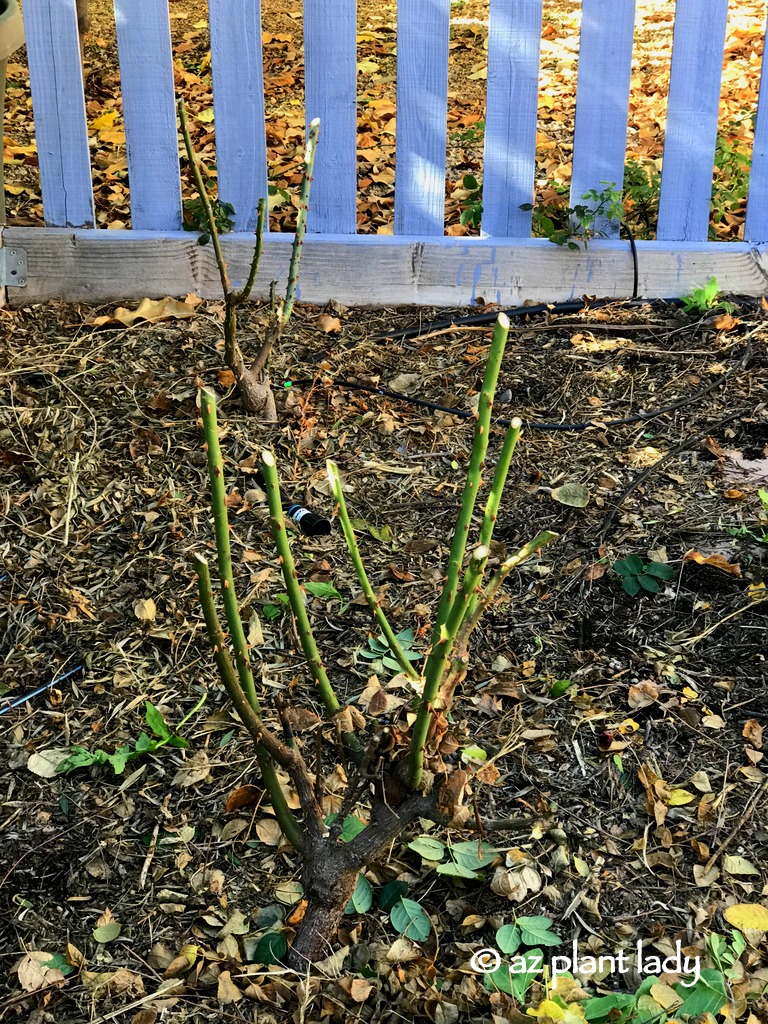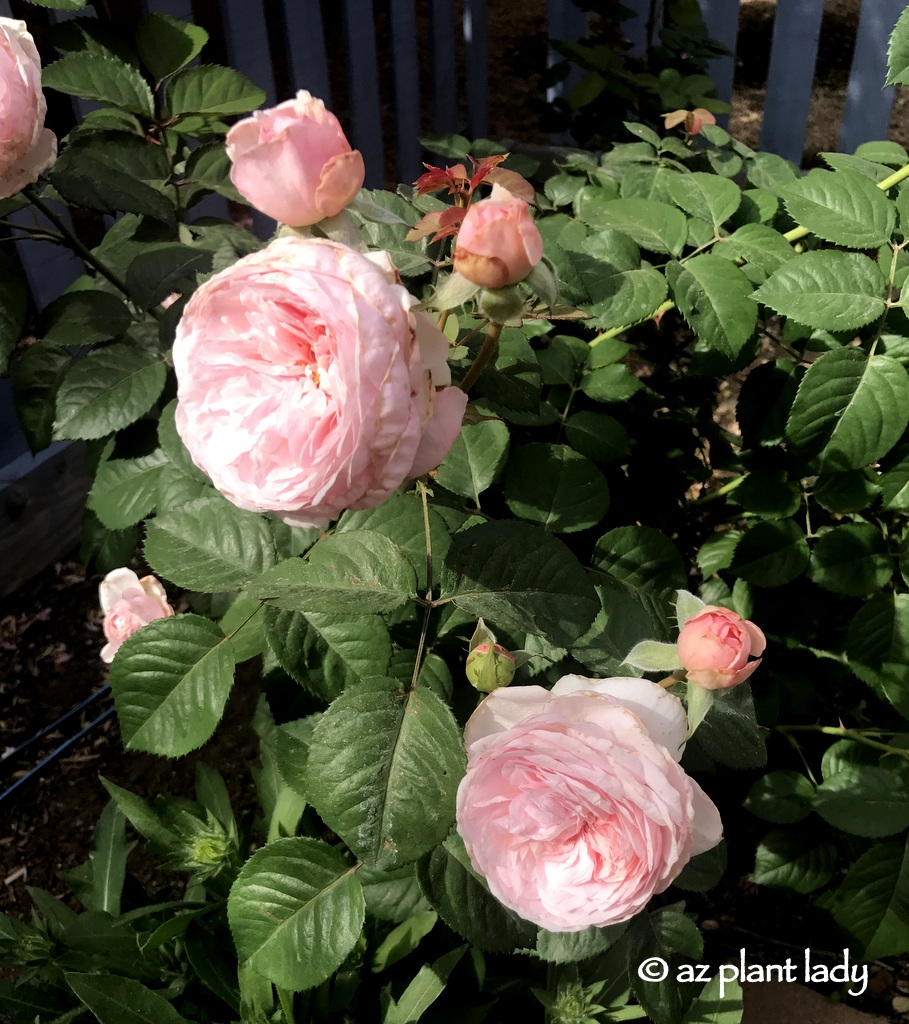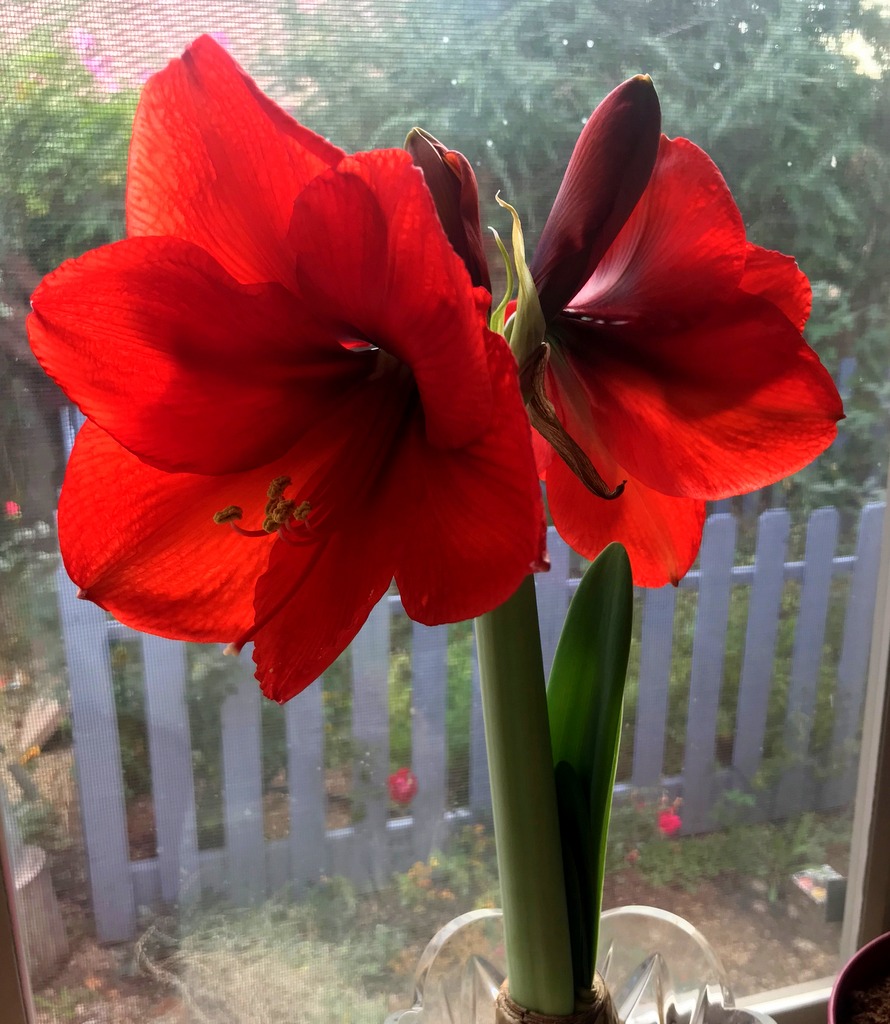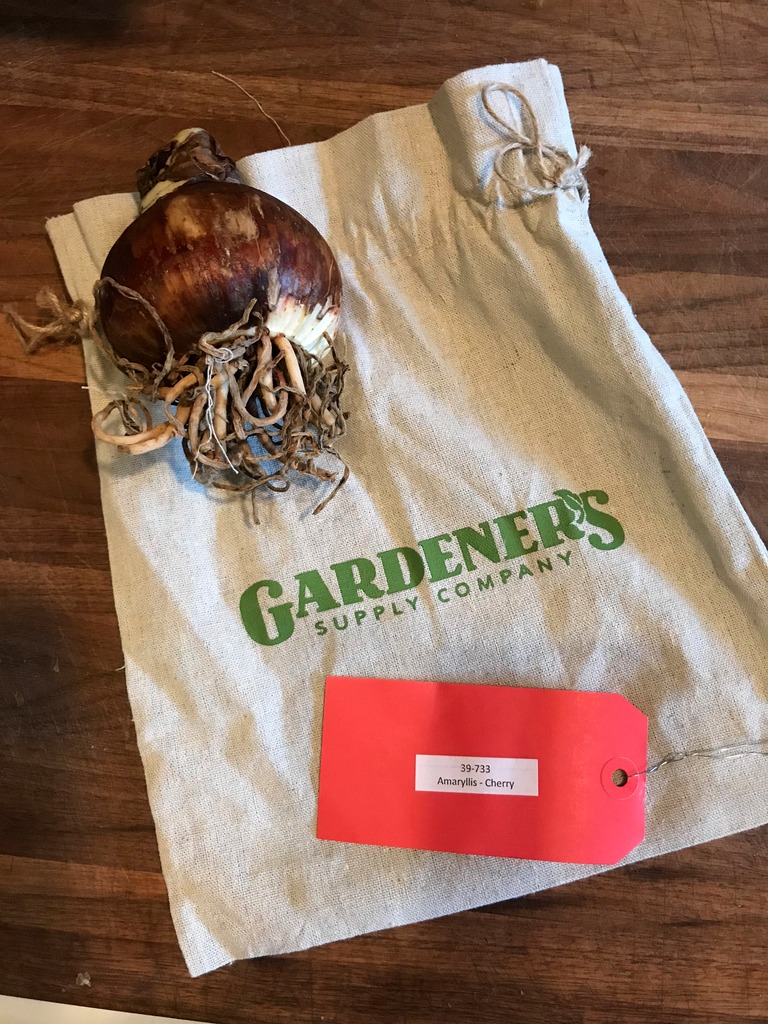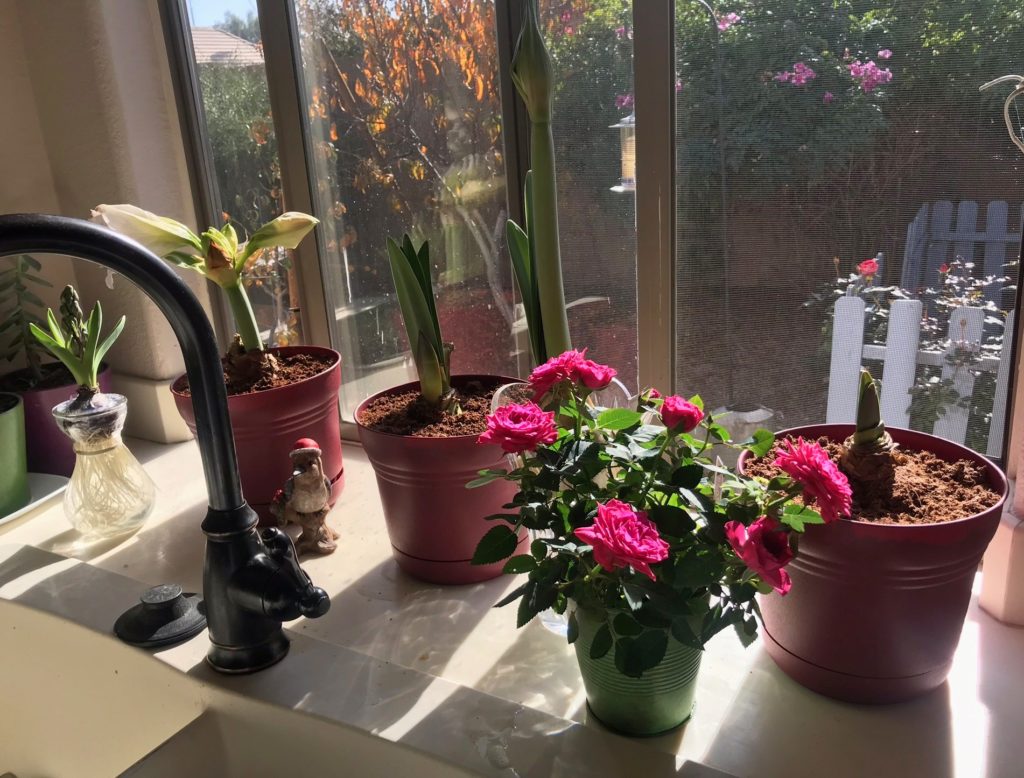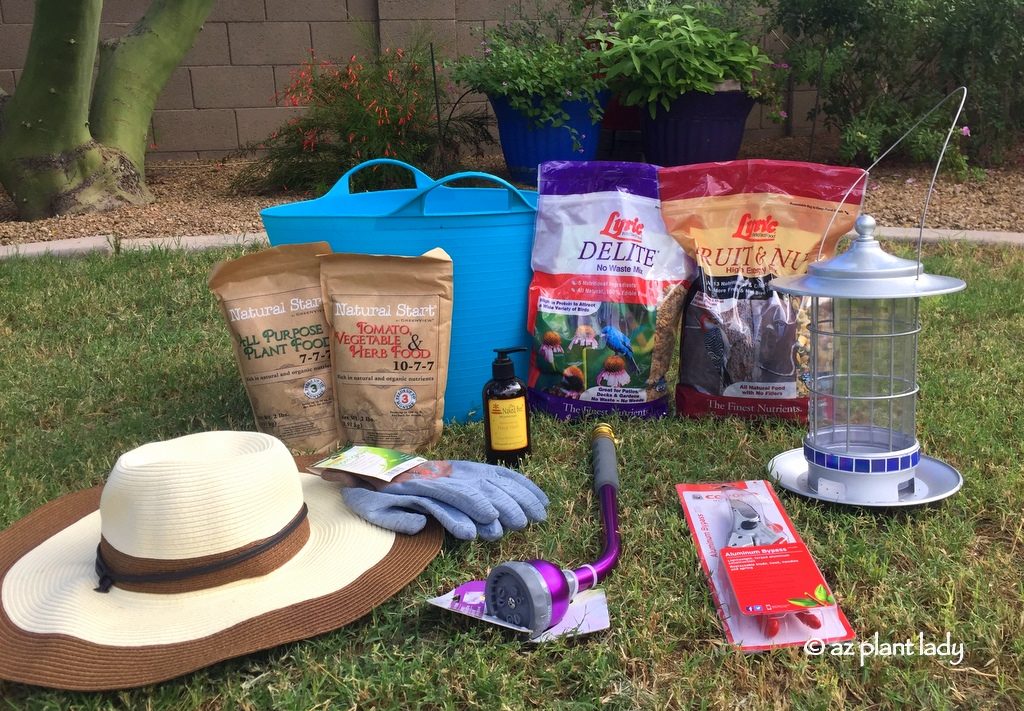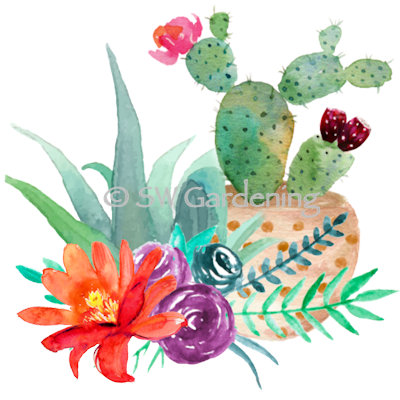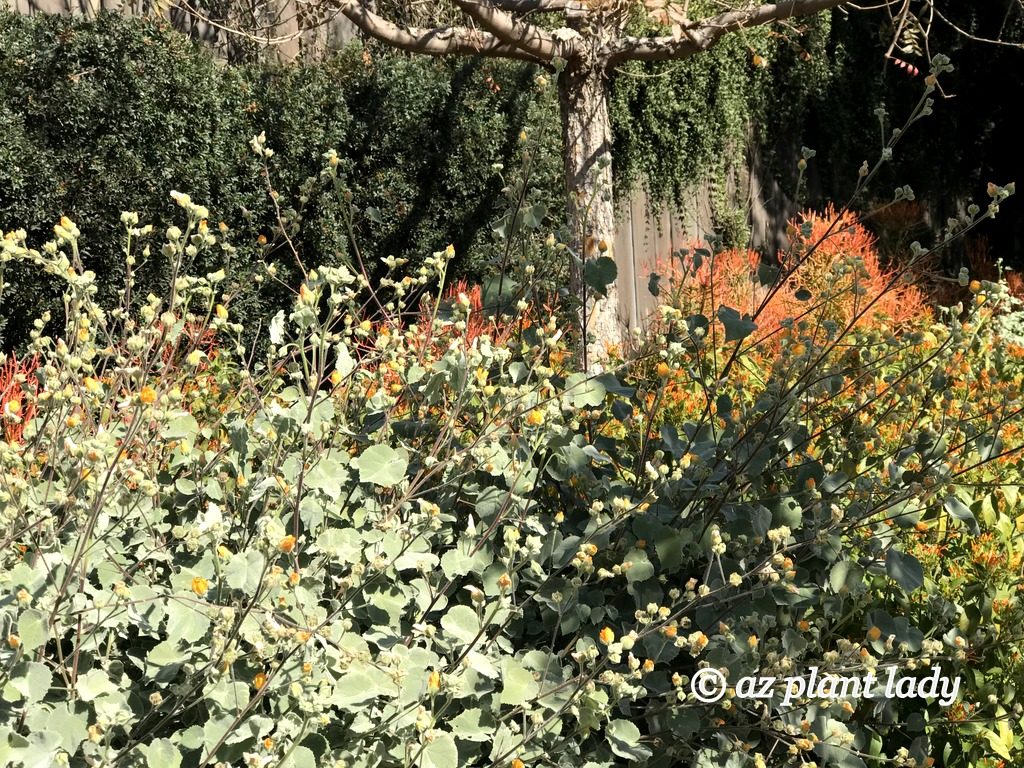
(Desert Adapted Plants) Indian Mallow (Abutilon palmeri)
Exploring Imaginary Landscapes with Desert Adapted Plants
I always enjoy seeing well-designed landscapes that make use of many of my favorite desert adapted plants. A couple of months ago, I had the opportunity to explore lovely landscape areas that existed within an imaginary land with real plants that were used to provide a sense of reality to this fictional place.
I invite you to explore these areas along with me and look for clues as to where it is.
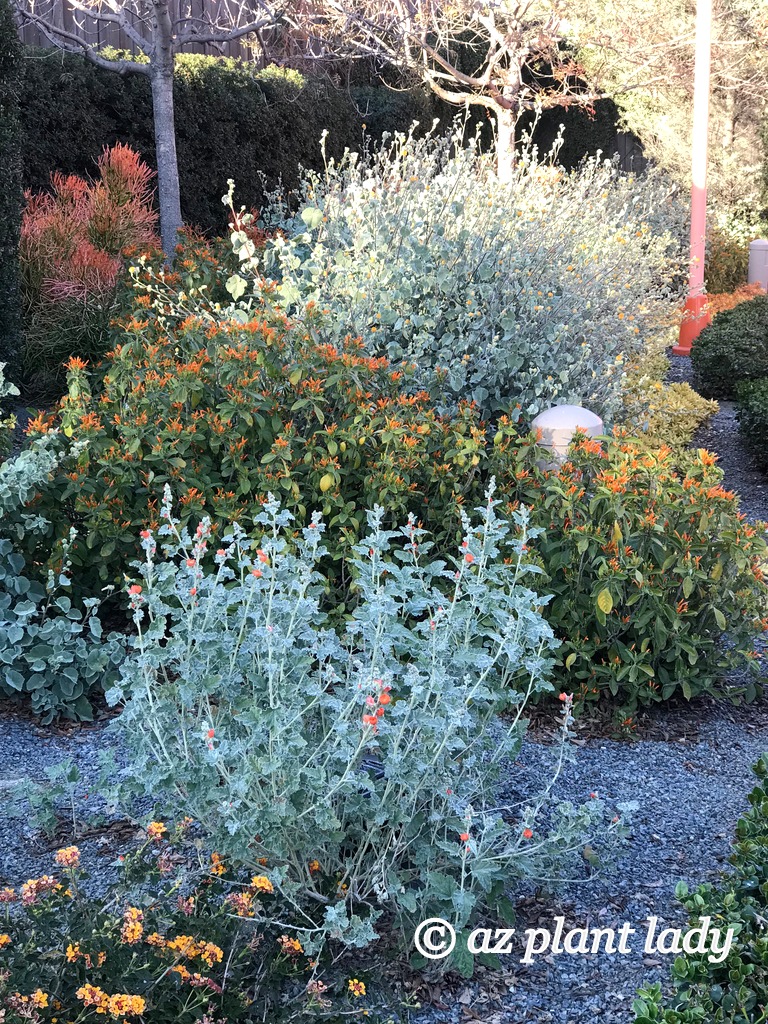
Globe mallow, Mexican honeysuckle, and Indian mallow
A Desert Oasis in a Fictional World: The Beauty of Desert Adapted Plants
This is a gorgeous layering of three different shrubby plants. Indian mallow (Abutilon palmeri) anchors the background with its gray-green leaves and yellow flowers. In the middle stands Mexican honeysuckle (Justicia spicigera), which has lovely foliage and orange flowers that appear throughout the year. Globe mallow (Sphaeralcea ambigua) adds nice color contrast with its foliage and orange flowers in the foreground. All of these are drought tolerant and thrive in desert gardens.
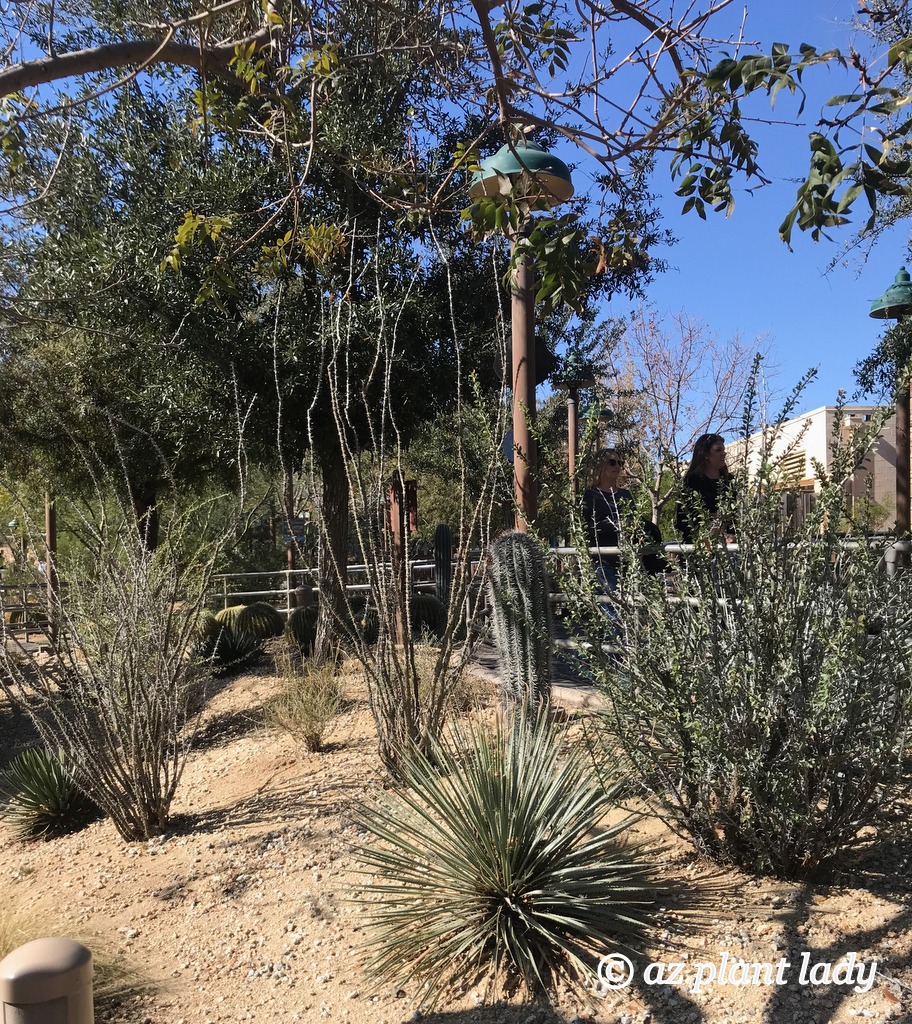
A Taste of Arizona: Desert Plants Creating Authenticity
Continuing our exploration, we walk by a desert planting filled with young heat proof plants such as saguaro cactus, ocotillo, and yucca. It almost made me feel like we were in Arizona.

The beautiful green foliage of a jojoba shrub (Simmondsia chinensis) stood out against the reddish walls of a ‘canyon’.
Vertical Elegance: Cereus Cacti and Mexican Fence Post Cactus
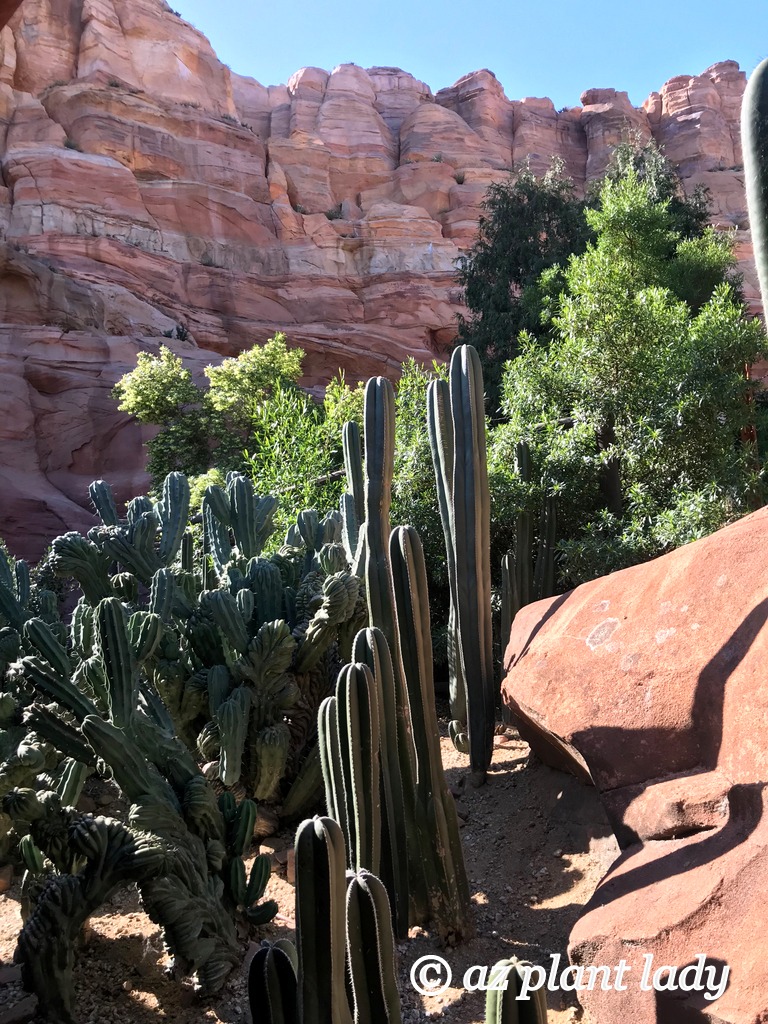
Mexican fence post cactuses (Pachycereus marginatus) along with other cereus cacti add a lovely vertical element.

Naturally-themed areas have a plant palette that places you in the desert Southwest. But, we were several hundred miles away from the real desert.
Have you guessed where we were yet? Here is another clue:
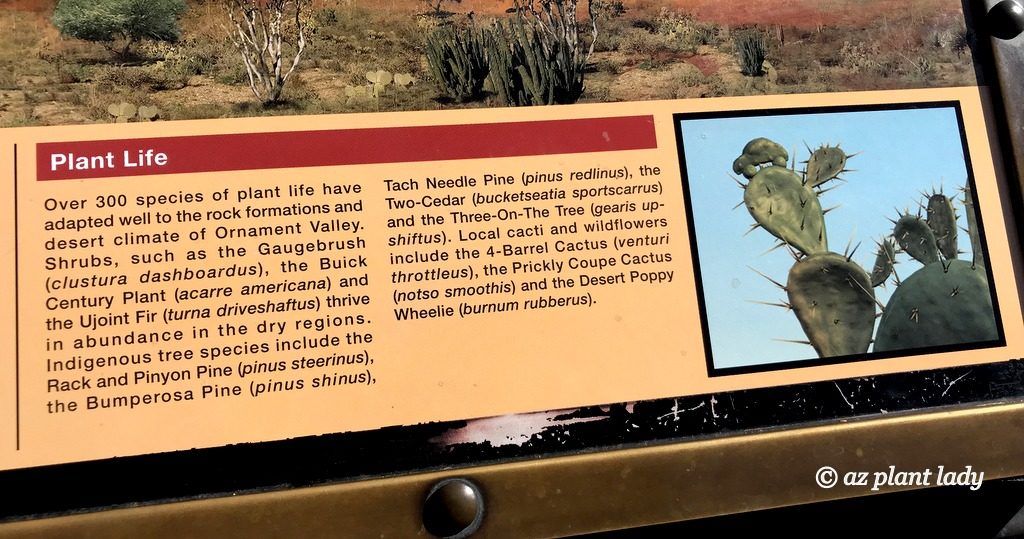
Information signs reveal the different kinds of plants in this imaginary land. Your final clue is the name of the plants as well as the shape of the small prickly pear pad.
Revealing Radiator Springs: A Disney-Inspired Desert Adventure

We were exploring the town of ‘Radiator Springs’ which came to life in the movie ‘Cars’ and its sequels. These are my favorite Disney movies because they take place in my own backyard.
Balancing Reality and Imagination: The Use of Live and Imaginary Plants
I found it pleasantly surprising how well they constructed this imaginary town and used the plants to achieve an authentic look. However, there were some notable exceptions to having live plants throughout Radiator Springs.
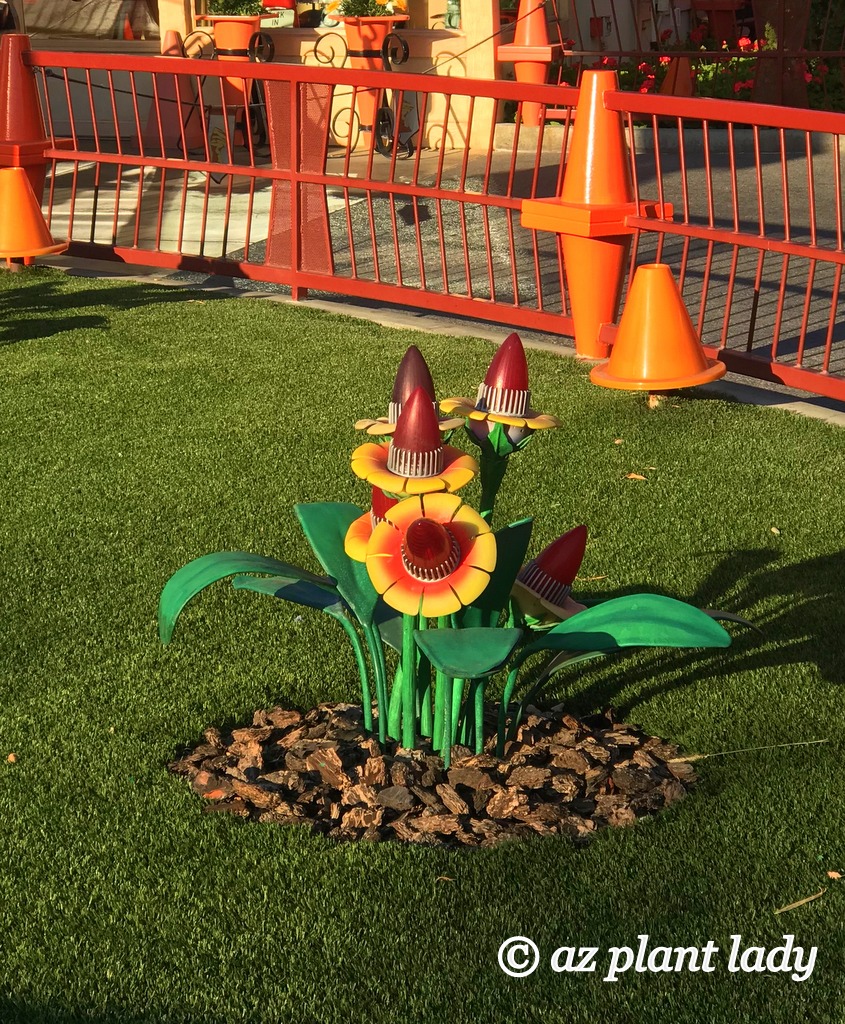
Old-fashioned rear lights create imaginary flowers at the Cozy Cone Hotel.
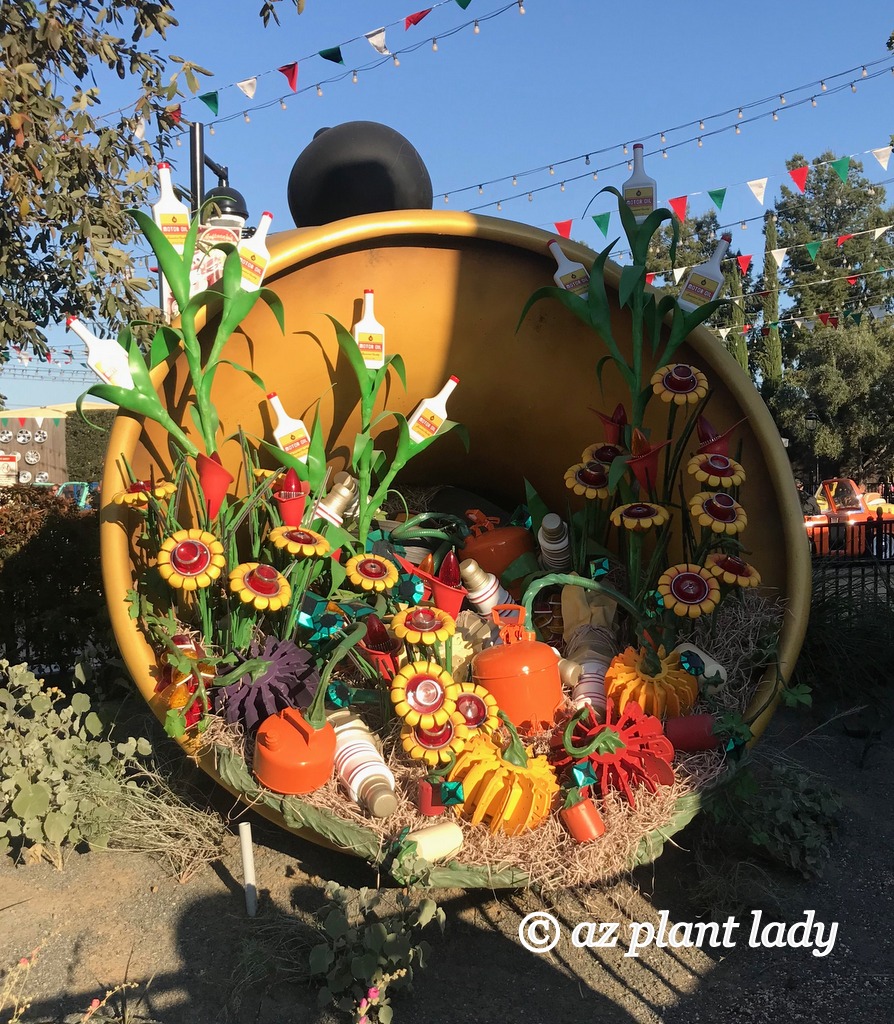
Other car parts serve as components of this cornucopia.

Inspiration for Your Desert Garden: A Visit to Cars Land
I found myself distracted by both the real and imaginary plants, other visitors reveled in the appearance of the inhabitants of Radiator Springs.

Have you ever visited Cars Land at Disney’s California Adventure? If you have the opportunity, you might discover inspiring ideas for your desert garden that could surprise you.


